SEGA DREAMCAST AREA | MAIN FEATURE
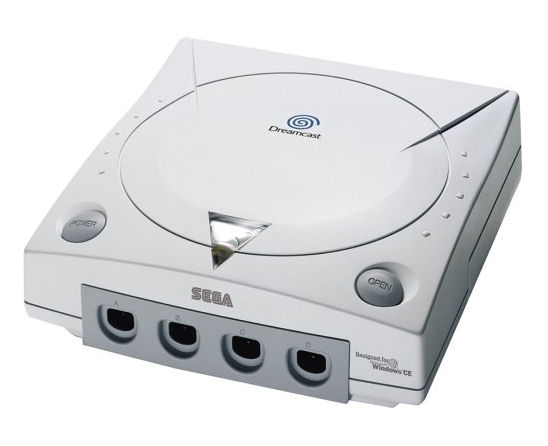
"Dreamcast will take you to a brand new world. It's not just a TV-game but a whole lot more. A new level of entertainment awaits you." - Japanese Box (HKT-5010)
Jump to --> [History] [Today] [Hardware] [Games] [Gallery] [Emulation] [Misc] [Links]
--Features Online--
After success in Japan only with the Saturn and its near zero impact in the Western markets, SEGA armed with a new team of chief executives decide on a final attempt making their name reside in the notoriously difficult hardware market of console gaming.
SEGA by this time had lost vast amounts of money. The Saturn had pushed SEGA way into the red. $500 million was allocated to the designing, creating and marketing the console.
Any mistakes would have dire consequences for the company as a whole. All this was known at the start but SEGA was dead-serious about this venture.
The Dreamcast was to be everything the Saturn was not and would leave the existing Playstation and N64 standing in every department. SEGA re-entered the console wars with a fresh new approach, a new console and the most original and intuitive games ever created as well as the first Internet-enabled console.
Unfortunately, SEGA's debts (incurred in the previous dreadful generation) became too great for them to sustain the system. Crushed by consoles that were backed with more cash, it is the tragic story of the death of the dream that started out with such promise.
For details on its inception, regional performance and legacy checkout the History of the Dreamcast Feature.
THE DREAMCAST TODAY
The Dreamcast is still very much alive today almost to the degree of being a current platform. New releases have continued since 2002 into 2020 following the consoles 20th anniversary. A highly talented user by the name of X has began porting games from Sammy Atomiswave arcade board which is a derivative of DC hardware. Examples include Metal Slug 6 and The King of Fighters Neowave.
Playing real hardware is still common as most people have spare VGA connectors on their TV's and monitors. Additionally, talented enthusiasts are resurrecting some of the old online gaming capabilities of the console. For example, Quake 3 and Phantasy Star Online are once again playable online.
Hardware can still be found easily online and retro gaming shops however some of the rare models/special edition consoles and accessories such as Samba De Amigo maracas can fetch eye-watering amounts.
There have been no hardware re-releases from SEGA. Unfortunately manufacturing GD-ROM drives and discs is highly unlikely. There is certainly a market for a re-release of the hardware in some form perhaps a Mini Dreamcast similar to the recent Mega Drive/Genesis Mini. SEGA has embraced the continued love for the console by offering items on their official SEGA Shop. There is a rather sexy hoody that one can buy!
One of SEGAs third-party manufacturers – Retrobit – are to release a new version of the controller alongside the standard edition having already released some Mega Drive/Genesis and Saturn controllers of high quality.
New releases come on CD-R and are playable on most consoles without modification. There have been several re-releases and upgraded ports of the games to other platforms but most of the software is becoming collectable now.
There are efforts underway by a handful of enthusiasts to preserve the games via hardware modifications (the GD-ROM's are over 20 years old now!) and some have been made playable via swapping out the GD-ROM drive with an interface supporting SD cards storing games.
Emulation is fairly complete (along with the NAOMI arcade board) and can be achieved on easily on current PCs. Checkout the Dreamcast Emulators page for more info.
A handful of games have been ported to other platforms and it is unlikely there will be any more. For example, Crazy Taxi and Rez, and thanks to the efforts of fans, Shenmue is about to receive high-profile third instalment and a HD remaster of the original. SEGA released a compilation title for the Xbox 360/PS3 featuring Sonic Adventure, SEGA Bass Fishing, Crazy Taxi and Space Channel 5 Part 2. Unfortunately, it did not impress.
Plenty of community websites exist dedicated to the system offering discussions, historical finds, reviews and other content such as soundtracks, game hacks and prototype/unreleased games now surfacing. The Dreamcast has the largest homebrew scene of any console in fact first been to create such a scene and was instrumental in creating this category in the first place. There are new homebrew games, utilities such as MP3 players and emulators. Coding competitions continue to produce outstanding results from the hardware and well worth a look. Check out plenty of projects on Youtube.
For much more content for Dreamcast zen - check out some if the URLs in the Links section below.
HARDWARE OVERVIEW
The Dreamcast is a powerful console designed with many off the shelf components each of which is maximised. Its development was with a powerhouse of partnerships including Hitachi, Yahama, NEC and Microsoft and made for an impressive performing low-cost platform which still stands the test of time today.
The console only exists in one design that utilises a flip-lid. There have been several revisions, mostly change in the colour of the console casing but the most significant was to prevent the reading of CD-R's to prevent piracy. The design is a break from the classic sleek black casing instead going with white (for the standard editions) and the logo is discreet. This was intentional as SEGA wished to create something completely different.

Console
For development, the system was (and still is) highly praised for its easy environment. The use of DirectX (a standard in games programming) based on Microsoft's Windows CE and SEGA's Custom libraries allowed for applications to be created easily. Games ported from PCs could be done in very short amounts of time and SEGA's custom libraries allowed for quick porting from NAOMI arcade games.
SEGA very much learned their lesson with a multi processor design (Saturn) and is obvious in the Dreamcast's single CPU and VDP design.
The system's main specifications are in the table below.
CPU |
Hitachi SuperH-4 RISC CPU @ 200MHz (360 MIPS) |
RAM |
16MB SDRAM |
Video |
NEC/VideoLogic PowerVR2DC @ 100MHz |
Audio |
Yamaha Super Intelligent Sound Processor AICA @ 45Mhz ARM7 core (40 MIPS) |
Storage |
Proprietary Yamaha 12X CAV GD-ROM |
Ports |
Controller Port (x4) |
SEGA stated that the hardware was upgradeable though no specific upgrades were made available.
Driving the system is a Hitachi SuperH-4 and is a 32-Bit RISC processor running at 200Mhz (360MIPS) and has outstanding floating point (maths) performance (four times that of a Pentium II) which is essential for 3D games. This very high performance yet low cost part is found frequently in set-top boxes and motor vehicle applications.
Some of the earliest Japanese consoles utilised unique heatsinks.
16MB of SDRAM is used for main program execution and storage. The average PC of the time used this amount to run the operating system and games/applications. SDRAM (Synchronous dynamic RAM) is a faster type of RAM found in PC's at the same time.
The Power VR2 chipset was created by NEC/Videologic who had produced powerful GPU's used on PC video cards at the time. In the Dreamcast it is clocked at 100MHz with a standard operating resolution of 640x480 hence the low fill rate. 8MB of video RAM is available for plentiful storage of textures which is double that of the PS2. Texture compression is supported to maximise this amount.
Anti-aliasing (not found on PS2) makes for much softer images where necessary.
It was the first console to offer support for the unofficial PAL-60 mode which allows games to be played at full-screen, full-speed like 60Hz NTSC but on a PAL TV. Games that support the feature normally offer the mode on start-up.
Audio hardware is a specialist solution supplied again by Yamaha like the Saturn. The processor is termed Yamaha Super Intelligent Sound Processor and has 2MB of RAM available for processing and storage of samples which is plentiful. Compatibility with XGlite (XG MIDI) is provided which is an extension to the MIDI format to increase the number of instruments and provide crisp sound quality. There is also support for 3D sound.
The Gigabyte Disc (GDROM) drive, also provided by Yamaha, is a proprietary format SEGA used to provide more storage capacity per disc and can transfer data at 1.8MB/sec. It is physically the same size as a CDROM which can hold around 700MB whereas a GDROM can hold 1GB. This was also an attempt to deter pirates as standard CDROM/DVD-ROM drives cannot read them.
The high-speed serial port is primarily designed to be used with accessories such as the system link-up cable for multi-screen gaming. Other uses included the link-up with the SNK Neo-Geo Pocket Colour and the never released MIDI cable. Users of the homebrew development scene created a 'Coders Cable' which essentially is a USB to Dreamcast lead that allowed for the transfer of code to test rather than burning discs.
At the side of the machine is a high-speed expansion port. Peripherals such as dial-up modem and broadband adaptor connect here. Other planned peripherals known to exist include a Zip Drive and DVD-ROM drive but were never released.
The system ships with a 56kbit/s (though Europe got 33.6kbits/s) modem which are interchangeable among systems. A web browser also supporting email was included though these have all seen significant updates since launch and can be found online easily. More information is below.
On the machines launch, many retailers adjusted their pages for compatibility so gamers could view pages on the console. These are pretty much extinct though some fan websites still support optimum view. For surfing the net a keyboard is recommended as it is very useful.
The AV port provides output of RF, Composite, S-Video, RGB with stereo sound and native VGA. A composite cable is provided as standard in US/Japan whereas the RF adaptor is standard in PAL regions.
Power is supplied via a standard figure 8 lead to an internal PSU. Voltages vary between the regions.
The Dreamcast BIOS creates an animated logo drawn on the screen with a jingle. The only difference between the versions is the colour of the logo. If a disc is loaded when powered on the BIOS will attempt an automatic boot. If the lid is open then the main screen will appear. A checking process is performed when the console boots or when the lid is closed as games are region locked. Any problem found and the main screen will be displayed instead along with the error message. If the game and region do not match "this game is unsuitable" will be displayed. There are hardware and software methods to get around this.
Any games that require the functions of Windows CE have this included with the game and the logo shown during the boot sequence.
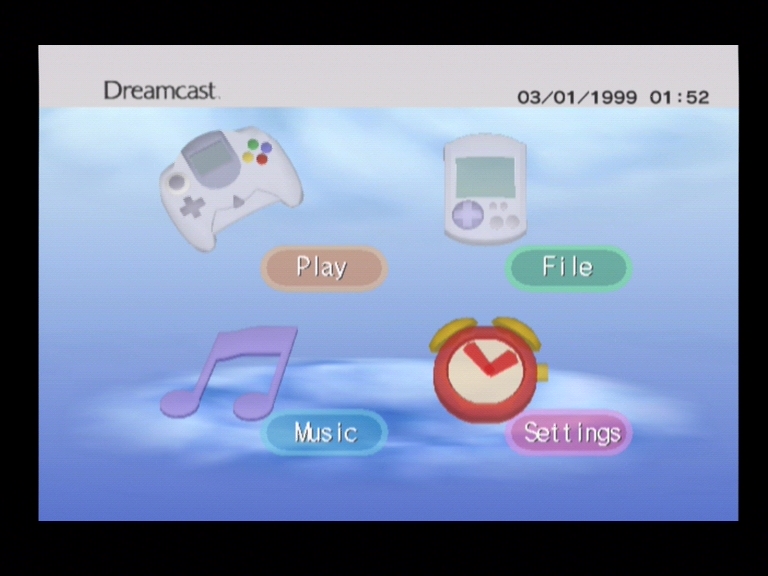 |
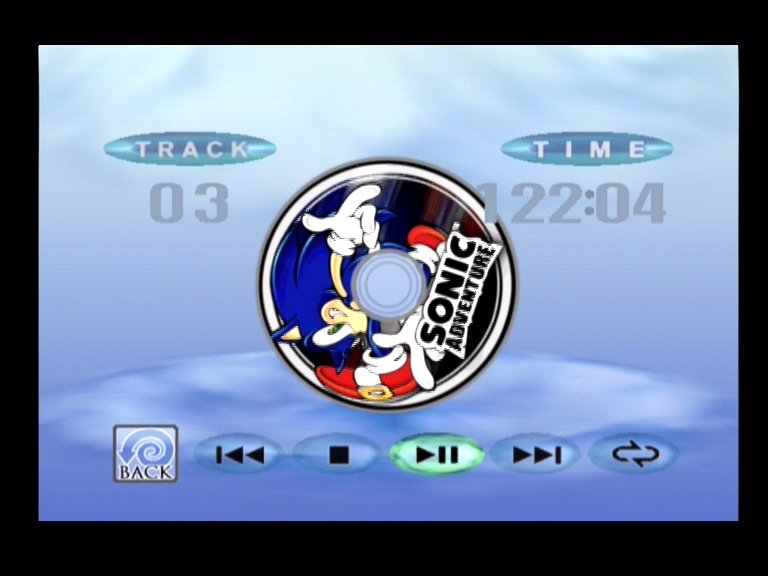 |
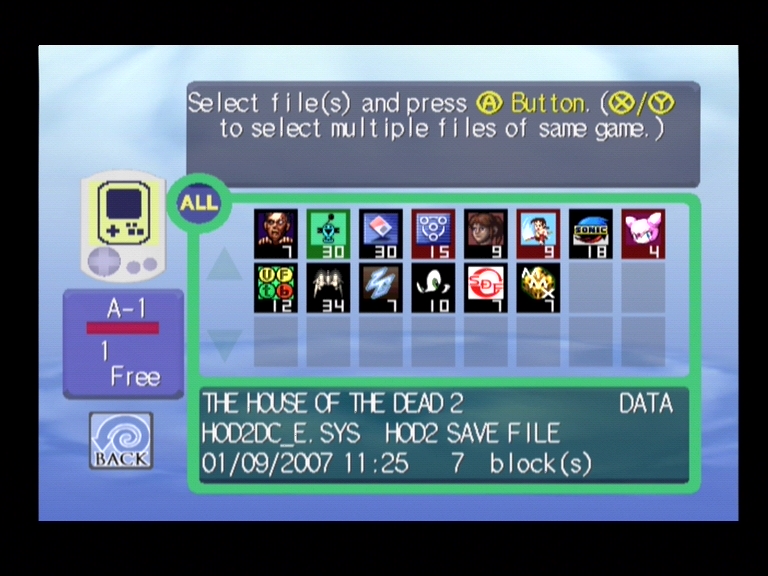 |
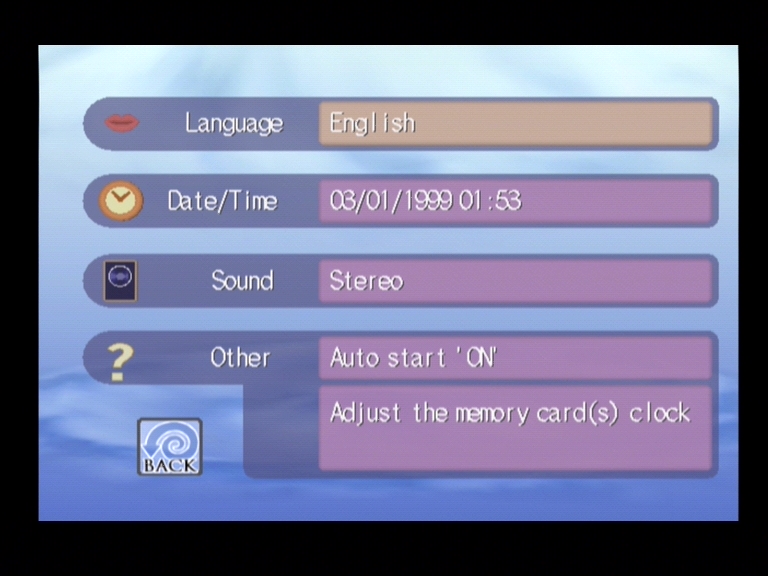 |
The BIOS GUI contains an option for: Play (boot disc), a simple CD player, VMU management and system options such as language, time/date etc. Curiously the swirl from the top-left of the screen is missing in the PAL version of the Dreamcast BIOS.
It is usually not possible to listen to any tracks of the games discs, however, if a game disc is loaded at the CD Player screen the artwork is displayed if the developer included it. Strangely CD+G's are no longer supported.
After a period of inactivity the screen will go dark to reduce the risk of screen burn.
Generally booting and loading times are quick. It is possible to use both 8cm and 12cm CD's. Depending on which revision of the hardware it could be possible to read (boot) from CD-R's.
The system is fully Y2K compliant.
The system has four controller ports. Only the second console to provide as many. Each port has 2Mbit/sec (256KB/sec) bandwidth.
The controller design is a significant change from previous SEGA designs though it bears striking resemblance to the Saturn NiGHTS/3D controller and this is generally considered the basis of the design. The analogue stick has 256 separate positions for accuracy along with a separate digital D-Pad.
Instead of the traditional 3/3 button design buttons are laid out 2/2 in a diamond shape with 2 triggers on the underside. It may have disappointed some hardcore gamers since the Saturn pad is highly regarded but perhaps this was SEGA's attempt to appeal to the masses since both the Playstation and N64 had similar layouts. Plenty of third party controllers of varying design exist.
The console does not have a reset button. Soft resets can be performed by pressing A+B+X+Y and Start simultaneously.
The controllers themselves have two ports for the plugging in of accessories. Visual Memory Units (VMU) and Vibration Packs usually occupy these slots though other devices are possible. It is possible to have two VMU's and or two vibration packs if you really wanted to.
The Visual Memory Unit (VMU)
The VMU is a storage device that will display information about the game currently being played when connected via a controller. This could be score, images, character status; all roll away on the screen during play.
All VMU's are compatible with all consoles.
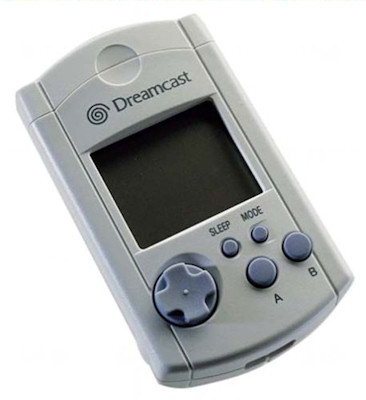 |
VMU Specs CPU 8-Bit |
VMU |
Specifications |
The capacity of a standard unit is 128KB (1Mbit), however by default 28KB is reserved for system use resulting in 200 Blocks. In recent years homebrew programs like Dream Explorer (aka VMU Tool) have allowed users to unlock an extra 44 blocks (22KB) of this reserved space increasing the overall VMU capacity to 244 blocks. There are some larger capacities available and some unofficial versions allow connection to a PC for file transfer/backup. VMU's can be attached to each other for transfer of data.
The VMU has the equivalent specs of a Gameboy and features a power saving CPU. It has a monochrome dot-matrix screen with a D-Pad and two buttons.
Some Dreamcast games will have sub-games or mini-games that can be downloaded to a VMU (usually unlocked) and played separately. VMU's can be connected together for 2-Player games. For example, Power Stone has several games including Fokker's Plane Chase, Ayome's Ninja Star Throwing and Gunrock's Slots. Sonic Adventure has a virtual pet system. There are several websites that have games available to download. The only problem can be is that these mini-games can sometimes take up the whole of the VMU.
Separately (standalone) it can display date/time and the details of it contents (files). As it is FLASH ROM even if the batteries fail the data will still be saved. Any saved files can be displayed and usual file functions apply such as copying, moving and deleting. Some browsers can use the VMU for storing objects such as images.
A separate emulator exists for this device.
Check out http://www.dcisozone.com/ and http://bswirl.kitsunet.org/vmu/game/ for plenty of VMU files to download.
Accessories
The Dreamcast with its array of accessories makes for the most intuitive consoles before the Wii. Unofficially all the accessories are compatible with any machine.
There is also the usual array of third party controllers, guns and steering wheels from companies such as Madcatz.
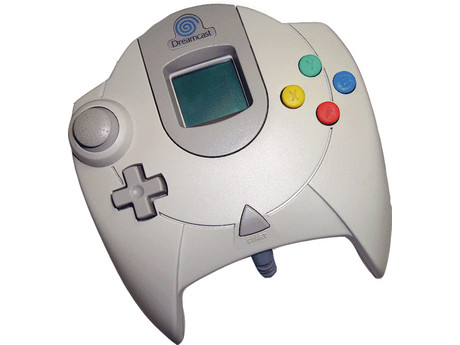 Standard Controller |
Can be found in several colours. |
 VMU/VMS/VM |
Primarily used for game saves. See above for more information. Sometimes known as a VMS. Can be found in several colours. |
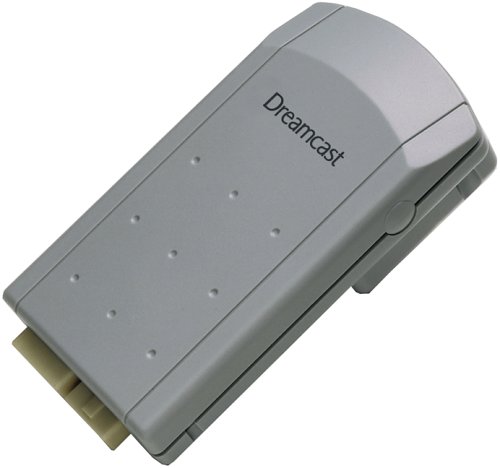 Vibration Unit |
Provides vibrations during gameplay. Most games are supported. No batteries required for operation. |
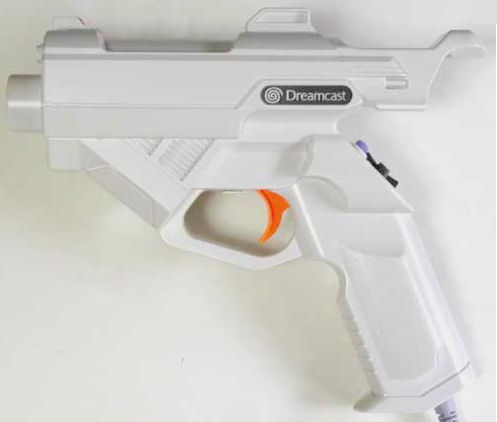 Light Gun |
Also has an expansion port for connection of a VMU or better still a rumble pack for kickback. In the US, there is no official light gun only third-party versions. This was because SEGA did not want to be seen supporting gun crime. |
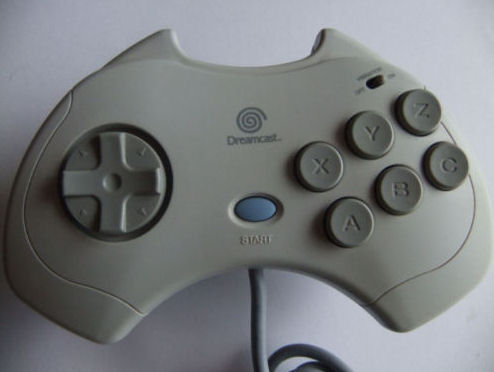 ASCII Pad |
Very similar to the highly regarded Saturn controller and used mostly for fighting games. It omits the analogue stick and has a more fluid D-Pad. It has a slot for a memory unit. There are a few variations in colouring of this as they were sometimes packaged with games. They are fairly rare. |
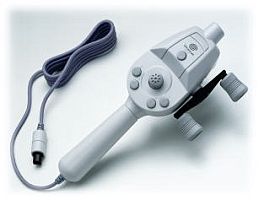 Fishing Rod |
Used for the intuitive fishing games such as SEGA Bass Fishing. It has integrated rumble features and no expansion port. The official version was is somewhat rare and there are several third party variants. |
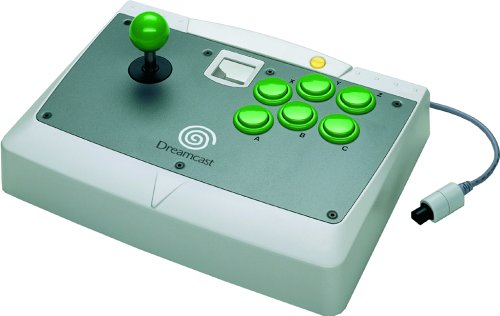 Arcade Stick |
This rather large controller has a roll-stick and buttons laid out to provide a more realistic arcade experience for games such as Virtua Fighter 3tb and Street Fighter III. |
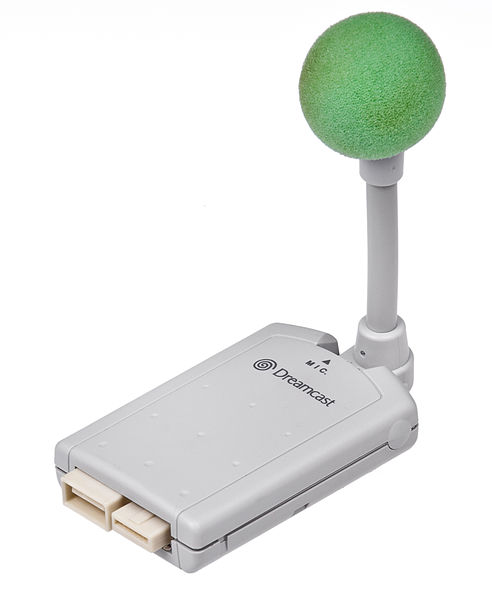 Microphone |
Supplied with the game Planet Ring in Europe. It was designed to have numerous functions from controlling game characters to in-game voice chat. It was also used with virtual pet simulator Seaman. It could also be used in conjunction with the Dreameye digital camera. |
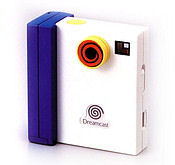 Dreameye |
A digital camera with a 640x480 resolution. Up to 31 images could be saved to the camera directly. The main functions of the Dreameye are video mail, photo mail, and TV phone. Came bundled with Visual Par and Dream Photo Fun for basic editing of photos. The video mail function allowed users send movie data of up to 25 seconds, and the receiver can save the data onto the VMU. |
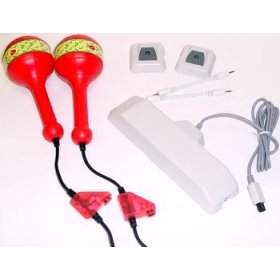 Maracas |
Designed for the game Samba De Amigo. They are to be shaken in time to the music on screen. These are now particularly rare. Some third-party versions do exist. |
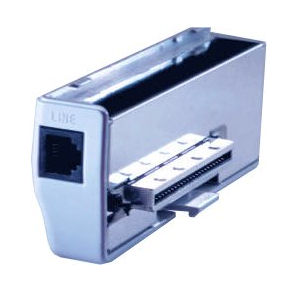 Modem |
Standard dial-up modem available in two speeds. 33.6kbit/s and 56kbit/s with full support for V34, V42 and MNP5 protocols. |
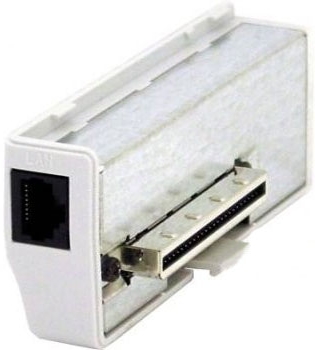 Broadband Adaptor |
Very limited production run and therefore rare. Simply a 10/100Mbps network adaptor (Realtek chipset) with a RJ45 connection. |
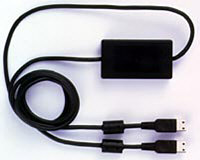 |
Allows for two Dreamcast consoles to link. Only several games made use of this feature including Virtual On Oratorio Tangram. |
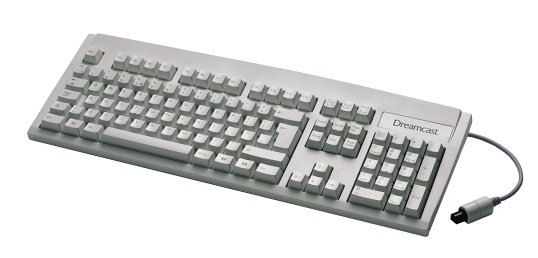 Keyboard |
Provides a full keyboard set much like a standard PC keyboard. Much improves the experience of web browsing. Some games such as The Typing Of The Dead make specific use of it for gameplay whereas for some FPS such as Quake 3 and Unreal Tournament it provides a more 'PC' experience. |
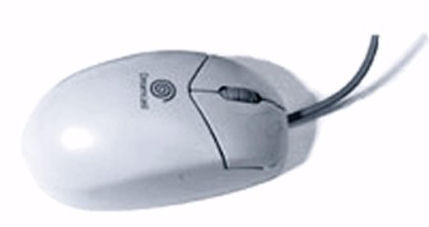 Mouse |
Pretty much a standard mouse having 3 buttons in total; 2 on the top with a scroll wheel between and 1 on the left side. It improves the browsing experience and movement in FPS games. |
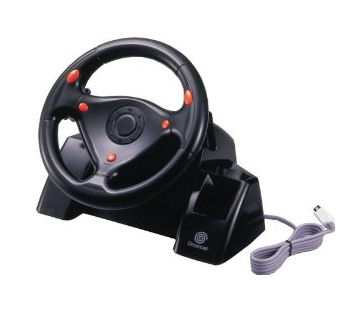 Race Controller |
Uses analogue control for smoother driving on the many racing sims. It has 2 analogue paddles, 4 front mounted buttons and an expansion slot for installing a memory unit. |
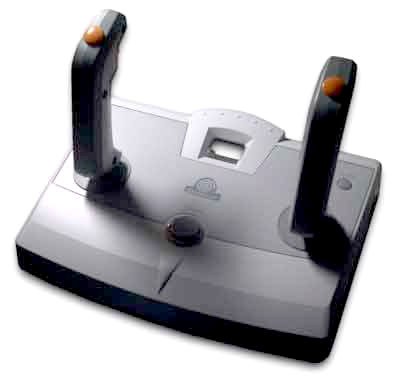 Twin Stick |
An upgraded version of the Saturn controller designed to be used with Virtual On Oratorio Tangram. It contains two joysticks at the expense of fewer buttons. There is also an expansion slot. It was only released in Japan. |
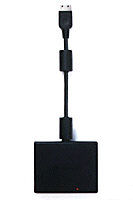 VGA Box |
Connects to the AV port and provides the highest possible picture quality. It made a dramatic difference in picture quality. Some games were not compatible, however, some of these could be worked around. SEGA's version also outputted Composite video. There are several third party variants. Some provide an S-Video output and a switch to toggle between the two. There is said to be a different in picture quality between the official and third party versions. |
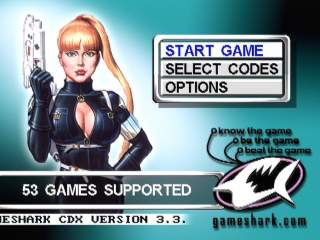 Gameshark/Action Replay (Unofficial) |
Provides cheat functions and an import boot function. See more information in the Booting Imports section. |
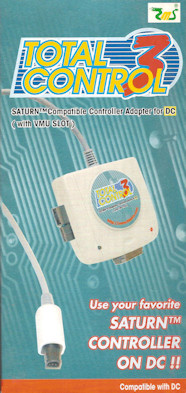 Total Control 3 (Unofficial) |
Allows for the connection of all SEGA Saturn controllers to the Dreamcast. An expansion connector is located on the box for a VMU. This is ideal for 2D fighters such as Capcom Vs SNK. Saturn Twin Sticks can be used for Virtual On Oratorio Tangram. |
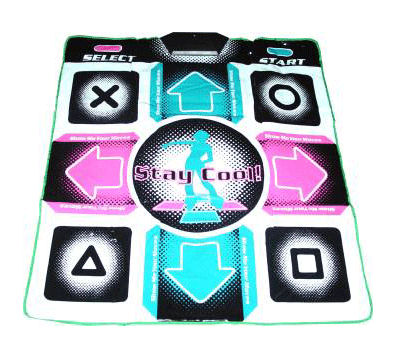 Dance Mat (Unofficial) |
From Konami and was designed to be used with Dance Dance Revolution games. A homebrew game called Feet of Fury was released and fully supported it. Space Channel 5 is reported to work well with it also. It is a pretty rare find. |
GDROM Discs/Format
Flip over a GDROM Disc and the surface is unlike either a CDROM or DVDROM.
There are 3 distinct areas visible.
The inner area of the disc (dark grey) is the low-density area which is essentially the same as a CDROM. There is capacity for 35Mb (4 mins). This is accessible by standard CD readers and sometimes developers (such as Sonic Team) will place extra bonus data here such as pictures.
The outer (light grey) is the High-Density area and this is protected by the proprietary format. Its capacity is around 1GB (112 mins). This can not be accessed by CD or even DVD readers. The increased capacity is achieved by packing the pits closer together on the disc. This also has the problem of making the discs extremely sensitive to scratches.
The black area between the two does not contain any data but has copyright information printed.
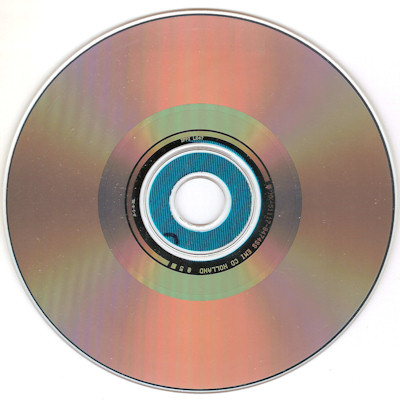 |
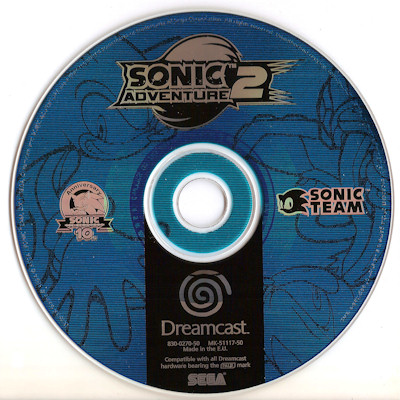 |
GDROM Disc - Art Side |
GDROM Disc - Data Side |
There is currently no way in which to make a duplicate of a GDROM disc. Writeable media does is exist but it was only sold with Dreamcast development kits.
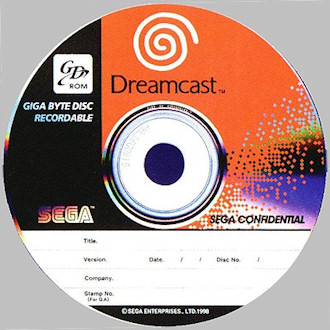
Recordable Dreamcast Disc
Development Environment
SEGA learnt from its past mistakes with Saturn and experience with previous machines and intended to provide the easiest development environment of any console made. SEGA worked with Microsoft to create a customised version of its Windows CE operating system for the console. With this the graphics and sound hardware could be accessed via DirectX - the standard method for writing PC games and multimedia applications. This also opened up the potential for very quick ports of PC games. It has been commented that an unpolished port of Epic's Unreal Tournament from the PC was done in a matter of weeks.
The actual operating system is supplied on-disc with which ever game that needs it.
There was a version of the audio tools on a Mac.
What is Windows CE?
Windows CE (WinCE) is an operating system (OS) developed by Microsoft and is designed for minimalist and embedded systems. It is a distinctly different version of Windows rather than a stripped down version. It has been developed through many versions for a range of CPUs including x86, MIPS, ARM and SuperH.
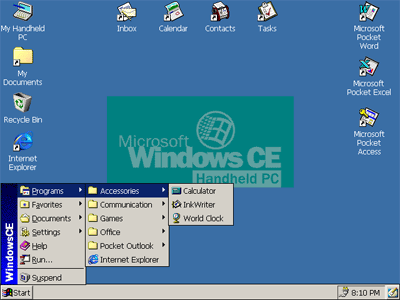
Windows CE Desktop
Although the Dreamcast uses Windows CE to power select games, you would not see a screen similar to the shot above running on the console. Instead, any game that requires the operating system will have it included on the disc. The boot-up logo will change to include the Windows CE logo.
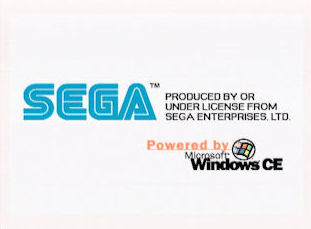
A Windows CE Powered Game
It also was the OS for Gizmondo handheld.
What is DirectX?
DirectX is a set of APIs for Windows that allows programmers to code for hardware devices most commonly sound and video without previously knowing which hardware will actually reside on any given machine. It has become the standard for programming games and multimedia.
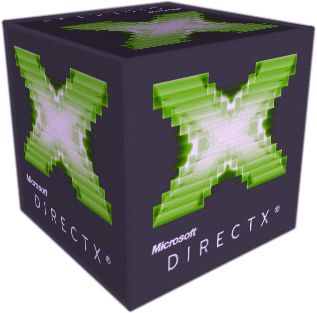
DirectX from Microsoft
It is a continuously evolving technology. As of writing the current DirectX version is 11. For the latest in the development checkout http://msdn.microsoft.com/en-us/directx/aa937781.
SEGA created a set of APIs for programming games. These gave better performance and were made much easier than for other consoles including those that came afterwards but were geared for developers already familiar with console development. Developers have commented that games can be produced with less code and complication on the Dreamcast compared to PS2.
Since the Dreamcast had the same chipset of the NAOMI arcade board it meant that virtually any NAOMI arcade game could be very easily ported to the console; the same technique SEGA used with the Genesis/Mega Drive almost a decade before
GAMES LIBRARY
Overview
Despite the machine never reaching its full potential there is no doubt in the high quality and diverse titles that compose the system's games library. In this section are some of the highlights and essential games that gave the system its character and identity and some detail on the productive homebrew scene.
While the beloved 128-Bit system never saw sequels to Panzer Dragoon Saga, NiGHTS, or Burning Rangers (among other Saturn favourites) every department within SEGA was geared wholly towards Dreamcast development (and NAOMI) giving the system excellent first-party support. When any Top 10 list is compiled over 50% of it will most likely consist of SEGA's own efforts, of which a good number were ports of highly successful arcade games. SEGA's studios did their best to break barriers of traditional game genres and the work of the period was some of the most unique.
Third-party support was very strong with titles coming from the biggest developers such as Capcom and SNK equally with some of the smallest such as G.Rev, Triangle Service and even homebrew efforts which added another dimension to the library.
For gamers this provides a very low ratio of crap to good games. Like any console there were also an amount of disappointments in the library such as Star Wars: Demolition, Railroad Tycoon 2, Time Stalkers and Blue Stinger.
Online gaming was widely reported as being very good despite most gamers only having the small bandwidth of dial-up available at the time - and the library reflects how SEGA were one of the pioneers of online gaming.
Whilst many of these classic titles never reached a large audience, some have been re-released on current platforms such as [Sonic Adventure], Rez, Crazy Taxi, The House of the Dead 2, Samba De Amigo and Space Channel 5.
Long after SEGA announced it was ceasing production in 2001 and the final developments were released throughout 2002, a trickle of games was released in Japan continuing in 2010. Importing was a popular practise throughout the system's life and remains the only way to obtain the latest releases. See the latest releases section for more info. As of 2010, NAOMI games are still being released in the arcades.
Collectors Prices
A good majority of the games can easily be found for under £10 and these can even be some of the last releases. There are a few exceptions that can fetch up to £50 if complete and these will be the rarer titles such as English versions of Shenmue II.
Import games are more difficult to gauge Older titles are usually between £8 and £20. Latest releases will be around £40 upon release with special editions costing between £45 and £60.
The Unique
Where the system shines is with its intuitive and unique games. Many titles are geared for multi-player gaming of just fun, giving the machine the reputation for party games that has since moved on to the Nintendo Wii today.
Samba De Amigo by Sonic Team - The daft looking monkey armed with maracas needed you to shake them at high, medium and low heights along to upbeat pop songs. This innovative shake'em up got its gamers pretty addicted making them look rather silly thus creating one of the best party games.
The difficulty is gradually applied with frantic shaking occurring at the higher levels.
The game was expensive with the additional maraca controllers and produced in limited numbers. Cheaper third party devices could be found yet it's a pretty enjoyable experience with standard controllers.
Fortunately for those who missed out it has been re-released on Nintendo Wii but with no maracas.
For Space Channel 5 you are asked to repeat a rhythm later without visual aids to create lasers to zap the attacking aliens. This game was one of the first of its kind and stood out not just because of the harder and compelling gameplay but also for its visual style with mini-skirt wearing alien news presenter Ulala and the music created a groovy style of techno and rock.
Although bursting with innovation it attracted only a very niche audience but enough to deserve a sequel.
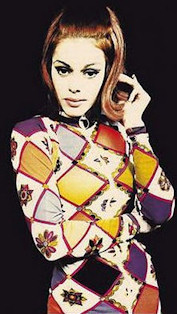 |
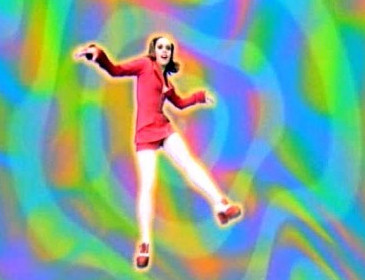 |
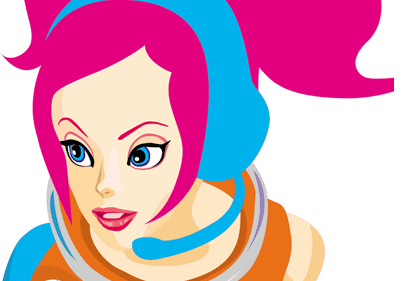 |
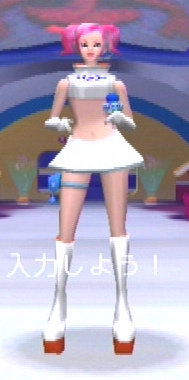 |
As a side note the singer Lady Miss Kier from 90's band Dee-Lite filed a lawsuit against SEGA in 2003 for copying her look for the main character of the game. She lost. Badly.
Seaman at its centre is a most original life/pet simulator. The creature is a freshwater fish with a human face and cantankerous disposition voiced by non other than Leonard Nimoy! The game utilised the microphone peripheral to enable players to interact via the voice-recognition system. You essentially need to care for your Seaman by figuring out what works best. A unique experience to be sure. It became very popular in Japan and released in the US but not in Europe for some unknown reason.
SEGA Bass Fishing allowed a fishing experience without the unpleasant smell of real fish or abject boredom. The goal is simple. Using your fishing rod controller you have to catch a quoted weight in fish (bass specifically) within a time limit. You cast out and through the use of various lures attract fish. As you reined them in, the rod attempts to vibrate out of your hands and the tension on the line fluctuates. If too high the line snaps and the catch gets away; something which gets more difficult to control with larger catches.
It was later followed up by SEGA Marine Fishing that offered more of the same gameplay but expanded the package with more options and different locations.
With more things marine - Ecco The Dolphin: Defender of the Future - is a classic series from the 16-Bit. Ecco was resurrected in a new 3D adventure by Appaloosa whom made the impressive Three Dirty Dwarfs for the Saturn. The translation into 3D was very successful and graphically the game had a major overhaul making it one of the system's showcase games.
With 34 levels of exploring and puzzle solving it's a tough game to be sure, especially with its quirky controls but it's mesmerising an excellent attempt at accurate realistic aquatic environments. It was also ported to PS2 and is somewhat rare.
Jet Set Radio (Jet Grind Radio) set in the urban Tokyo backdrop of streets, bus shelters and rails you take to In-Line skating and riding vehicles to trendy hip-hop beats. As a member of the GG's you mark territory with your artwork (graffiti) and can accumulate more gang members. Unfortunately, three other gangs are encroaching on your turf and the plans of an evil corporation need to be stopped. Getting in the way is the threat from the heavy handed Tokyo police calling in the army at times along with their helicopters and a time limit thrown in.
The unique visual style was done with SEGA's pioneering cell-shaded graphics along with energetic music from Hideki Naganum et al, making one of the slickest games ever and a showcase title for the system. It failed to grab the attention of the masses but easily earned a cult following.
A scaled down version was released for Gameboy Advance in 2003 whilst a sequel Jet Set Radio Future was released for the Xbox in 2002.
In September 2012, the original Jet Set Radio was released on Xbox Live Arcade, PC, PSN and Vita. Its upgrades include the HD visual treatment, fan-created graffiti, and 10 playable characters.
Action
The Dreamcast has a plentiful array of superb action games, some of which can be spread among four players.
Sonic Adventure was one of the launch titles for the console and the most successful. The blue mascot's first steps into 3D created a wonderful game that combines speed and excellent level design. These games were considered to be the first 'true' Sonic games since the 16-Bit era even though they did not quite capture the feel of the old-skool games yet the sense of adventure make it very enjoyable. A sequel, Sonic Adventure 2 was released in 2001 commemorating Sonic's 10th Anniversary. For much more information about the game check out the Sonic Adventure features in the Sonic The Hedgehog Area.
Rez is a unique (some say bizarre) musical on-rails shooter from the makers of Space Channel 5 and in a vein to Panzer Dragoon. The game oozes with artistic flare to create a special audio and video experience set in cyberspace attempting to rescue the AI known as Eden.
As you play, the shots from your character will make beats in line to the thumping techno soundtrack. No screenshot can do the game justice. It was released at the end of the consoles life and gained a cult following. It was later ported to PS2 though the Dreamcast version is rarer. It has since been re-released in HD on Xbox Live Arcade.
Resident Evil: Code Veronica was the first in the series to do away with the static 2D backdrops for fully rendered real time 3D environments. The story describes Claire Redfield's attempt to escape from Rockfort Island; an Umbrella installation. It sold so well that Capcom decided to re-release Resident Evil 2 and 3 on the Dreamcast. It was meant to be a Dreamcast exclusive but typically the slightly updated version entitled Code Veronica Complete released later ported to PS2 and Gamecube under the title Code Veronica X.
MDK2 from Bioware was hailed as a brilliantly innovative game even though there was mixed opinions about the gameplay. It is a shining example of what can be done with the third person shoot-'em-up/adventure genre and what can be done with the power of the Dreamcast. It continued the story of the aliens back for a second attempt at vanquishing Earth.
Tomb Raider - Two games in the highly popular franchise were released; The Last Revelation and Tomb Raider Chronicles and these instalments had a major upgrade in graphics since it was not limited by the 32-Bit Playstation. Unfortunately neither sold particularly well.
Starlancer originally from Microsoft and released on the PC; despite the console version having a turbulent development history it frequently earns the title as best shooter for the system with its superb top-blasting gameplay and online play where six players can fight each other from an array of interstellar fighter craft.
Crazy Taxi is simple addictive arcade fun that has you saying "one more go". The concept and gameplay is simple and effective; as a cab driver you needed to locate customers and get them to their desired location across the city as quickly as possible. Beginning with a time limit of just a few minutes you added extra time and earned money for exceeding customer's expectations. The frantic gameplay of unrestricted driving in an indestructible car was joined with punk rock soundtrack from the Offspring and Bad Religion. Bright vibrant graphics and a good control system made the game very accessible.
Dreamcast additions included more play modes, an entire new city to conduct business in and a Crazy Box feature that were mini-games such as bowling using the cab as a ball that allowed you to learn some of the special moves.
A sequel was released about a year later that added more gameplay modes. It was also the first ever game to be ported to PS2 followed by a Gamecube and PC release. Crazy Taxi III: High Roller was released on Xbox in 2003 with even more modes of play. A vastly scaled down version called Crazy Taxi: Catch a Ride was released on the GBA in 2003.
Headhunter developed by Amuse was one of the later releases and is a solid item in any Dreamcast owners collection. It was even dubbed by many as "MGS Killer".
Set in early twenty first century in Southern California, Headhunter follows the story of Jack Wade, a leading officer of the privatized law enforcement group known as the Anti-Crime Network (ACN). He was one of their best agents until he lost his memory. Now, your license revoked and without the support of the ACN, you try to piece together your memories as well as solve the recent murder of the ACN President.
The gameplay is a seamless blend of adventure, stealth and all out blasting action with incredible detail placed on story and setting. The camera is mostly set in third person perspective though there are some sections that move to first person. Along the way will be the odd puzzle to be solved and boss encounters. Between each of the missions you ride your trusty motorbike to the next location which is a game itself as the city is rather busy and adds further depth to the setting. The games story is advanced by a series of news-cast style FMV sequences.
This version was only released in Europe and ported to the Playstation 2 in 2002. A sequel Headhunter: Redemption was released in 2004 for the XBox and Playstation 2.
The House of The Dead 2 was a hit in the arcades giving gamers huge enemies to blast gory green holes in and plenty of blood! You blast away through hordes of zombies and some huge creatures to thwart the plans of a certain Mr Goldman.
The port was the first light-gun game for the system including extra gameplay modes and slightly improved graphics but unfortunately the same lame voice acting remained. Thankfully this does not affect the joy of the zombie blasting experience.
It was possible to play this on a CRT TV or VGA monitor. A vibration pack could be added to the gun for some recoil. For more info checkout the [House Of the Dead 2] page. The game has since been re-released on PC, Xbox (as an extra with House of the Dead 3) and Wii.
Confidential Mission is another light-gun game ported directly from the arcades from SEGA's Hitmaker Studio. It's a rather basic shooter that has almost every James Bond cliché in it. You take the role of a government agent tasked with recovering a stolen satellite by the Agares Corporation. That said it throws in a few twists on the otherwise typical light-gun gameplay. There will be tricky spots where there is a time limit to complete a certain task such as plugging up leaking gas pipes. Success will grant a small shortcut through the stage.
Extra modes were added and the ability to connect to the games website to download extra missions made a modest title in the library but moreover was another reason to actually use the light-gun and to see SEGA's appalling yet amusing voice acting of the era.
Quake 3 Arena was a highly anticipated title - and it delivered. Not only were players able to frag their way through the various modes of play but they had full online support! Something the PS2 version never had! The four player split screen action truly showed the strength of the system. The keyboard and mouse accessories (optional) provided all the experience that a PC would provide. An equivalent PC setup would have cost almost 4 times the amount!
Also checkout Unreal Tournament which although scaled down from its original PC incarnation is more fun to play than Quake 3 Arena and reported to suffer far less from slowdown than the PS2 version. Unfortunately it lacks any online gameplay.
The controversial Soldier of Fortune was an excellent conversion from the PC although it suffered from crippling loading times and inexplicably lacking online play. The quality of the gameplay in single player mode with its graphics and sound compensated for it - along with the bargain price tag.
Arcade FPS Outrigger came from legendary AM#2 and arrived on the system in slick colourful form. This underappreciated title was designed to make the FPS genre less intimidating by incorporating a unique bonus point system where a dead player dropped a coin in which any other player could collect to earn a bonus point making match wins not determined by just who was best at head shots.
Your character, armed with three weapons is placed in a relatively small arena creating a frantic case of either kill or be killed.
Extras in the console version included Mission Mode which, as they were completed unlocked new characters, stages and weapons.
This game was released towards the end of the system's life and is somewhat rare. The US version had online gaming and even supported the rare broadband adaptor.
Fighters
Some of the best fighters of the generation began on the Dreamcast.
Virtua Fighter 3tb (VF3tb) was a launch title for the system pulled from the arcades and became an early essential title. It offered almost everything that was present in the massively popular arcade version including the new Team Battle gameplay.
All the characters returned including two new ones; Aoi Umenokoji - a high school student turned VF and Taka-arashi - a sumo wrestler.
Interestingly, SEGA decided to farm the console port of VF3tb to Genki, a company whom are veterans of the industry and still exist today. Though it noticeably lacked the graphical wonder of the original arcade machine (frame rate problems before a round begins, poorly translated backgrounds were some issues) it still has all the strategy and gameplay intact - something probably more important to most.
It should be noted however, that some of these issues had been improved for the PAL release.
Better looking fighters quickly appeared on the system but the deeper strategy in the gameplay where button mashing is not as effective adding longevity. The brawls are more restricted to a 2D style with only small sidestep movements to the left and right implemented as evades.
This became the only VF game on the system despite the port of VF4 being announced.
Alternatively check out Dead or Alive 2 from Tecmo or Fighting Vipers 2 - the follow up to the niche Saturn title from AM2 and ported from the arcades.
Soul Calibur gave the platform possibly one of its most important titles. Namco's legendary 3D weapon based brawler is a game that effectively sold the Dreamcast not only for the excellent gameplay but also for its jaw-dropping graphics which is even more impressive considering this was a first generation title - and when played in VGA mode looks stunning.
Each warrior in the game is armed with a deadly weapon - axes, swords, nunchaku to name few - along with a huge number of special moves. Combined with several gameplay modes, unlockable characters and mini-game for the VMU it was an outstanding package earning very high review scores.
Low sales, however, precluded a sequel ever being released. It has since been re-released on Xbox Live Arcade but this version does not compare anywhere to the original Dreamcast release. Sequels have been released on subsequent platforms.
Dead or Alive 2, whilst not as deep as VF3b or visually stunning as Soul Calibur, was a much anticipated game offering a full 3D brawling experience that takes place over multiple floors by smashing your opponents through walls and floors. It was a topic of discussion when put side-by-side with the PS2 version which, for all its hype of superiority actually showed nothing more.
Power Stone from Capcom was a fun and innovative arcade fighter that pitched two characters in an arena where essentially everything (furniture, walls, poles, crates etc) can be used a weapon alongside an array of weapons such as guns and traditional attacks. The main twist came when a character obtaining three of the randomly placed gems or beating them from their rival's possession, temporarily turned into a super powered-up version of themselves that could then pulverise their opponent. Keeping your rival away from these gems was as much work as collecting them.
It scored only a minor hit but was popular enough to warrant a sequel offering improved arenas and 4 player simultaneous chaotic battles! Both games have since been released on PSP.
RPG's and Puzzlers
RPG lovers enjoyed an assortment of games which have been rated as some of the highest quality of the generation.
Skies of Arcadia (also known as Eternal Arcadia in Japan) was SEGA's first RPG for the Dreamcast. It was confused at first with being a new Phantasy Star instalment as it was being created by the same team but SEGA had much bigger plans for that trademark franchise.
You play the part of Vyse, a young member of The Blue Rogues - a group of sky pirates. The world is composed of floating islands and your airship transports you between them where you explore and make discoveries. Ship warfare is frequent and adds a refreshing addition to typical character based combat. A magic system completes the setup giving characters many extraordinary abilities.
It scored extremely well with the critics and became a hit with RPG fans for its upbeat quest with some innovative ideas and locations as well as displaying excellent visuals with environments that were highly detailed with rich vibrant colours.
It has since been ported and upgraded to the Gamecube under the title Skies of Arcadia Legends with enhancements including more content, characters and improved graphics. Both versions are somewhat rare.
Shenmue - massively hyped and costing some $20 million, this game is worthy of the title masterpiece creating a highly immersive world. It is an odd game in a way but considered to be one of the best SEGA has ever produced. Many modern games owe much to Shenmue for quality of art direction.
It combined elements from adventure, RPG, simulator and even fighting games to create an epic journey of amazing depth to bring the gamer closer to reality. There is a massive amount of detail to the environment of the city of Shenmue. It's possible to interact with almost every object and master several different martial arts among other things.
Its sequel expanded on the original in every way with bigger locations and more characters. It was never released in the US but ported to Xbox worldwide. Fans of the franchise hear rumours each year that a third instalment is in development but nothing has since surfaced. It originally has it roots back on the Saturn.
Phantasy Star Online - Back in 2000 people could only dream of playing an RPG game online with friends from over the world. The gameplay has a faster pace than most RPGs where you take on monsters collecting equipment and special items to level-up a characters stats. Admittedly, the hack-n-slash RPG gameplay was a tad basic to play alone but with a few companions it was rather addictive satisfying new comers and fans of the series alike.
'Ver 2' was released in 2001 with enhancements including extra levels, new ways of interacting online and tweaks to the gameplay overall. Since then sequels have been released on numerous platforms with the latest being Phantasy Star Universe for Xbox 360.
Alternatively checkout Grandia 2 from GameArts; the sequel to the acclaimed but niche Saturn game and Evolution 2 from Sting.
Bangai-0 from Treasure holds a special place in many a gamer's heart. Whilst not strictly puzzle nor shoot'em-up it offers truly compelling and addictive gameplay. It is essentially a free-roaming shooter and everything on screen is small allowing an area to be packed with destructive potential. It is fast paced and varied but moreover is pure fun. You explore the somewhat huge levels indiscriminately blasting everything and collecting fruit culminating with a boss fight.
A version was released on the Nintendo DS entitled Bangai-O Spirits that was based on the Dreamcast version and offered four-player co-op and a robust level editor.
Chu Chu Rocket has honourable mention going out to Sonic Team's unique puzzler for being the world's first online console game. It has challenging single and multi-player modes. The concept is simple: you must guide your mice by placing direction tiles on a grid out of harms way of hungry cats to their rocket to escape.
It can be mind-bending with such deep strategy required and the ability to have 4 player matches makes for some great competition that makes you think creatively.
A version was released for the Gameboy Advance in 2001 with versions planned for Apple devices later in 2010.
2D Heritage
The Saturn was home to some of the best 2D titles ever made and unlike Sony, SEGA were happy to license both 2D and 3D games so Dreamcast has some brilliant titles that are exclusive to the system. These less sophisticated games came with very little loading times and provided insane action.
There is an extensive list of 2D fighters from Capcom, SNK and others developers that supported the system to its maximum. Although 2D in nature, some games combined 3D graphics to create a more modern look. For this genre, an Agetec arcade stick was the dream set-up for beat'em up fans or even the Saturn control pad was deemed perfect by many and a company even produced a connector that allowed the use of Saturn pads.
From Capcom came a slew of titles including Street Fighter 3: Third Strike, Marvel Vs Capcom series and the insanity of the Capcom Vs SNK series.
From SNK were Guilty Gear X, Fatal Fury and five The King of Fighters titles, some of which included a link up with the Neo-Geo Pocket Colour handheld for unlocking items.
This 2D heritage also extended to shoot-em'ups; the ever popular genre with the most hardcore of gamers. The vast majority of these were pulled from the arcades thanks to the NAOMI>Dreamcast simplicity of conversion. Almost all were only released in Japan though exceptions include Giga Wing and Gun Bird 2 both of which were poor examples of the genre and slated.
Whilst Ikaruga(the spiritual sequel to Radiant Silvergun) is well known and has been re-released on Xbox Live Arcade, there are a good deal more including Border Down, Zero Gunner 2, Castle of Shikigami (Shiro no Shiro), and then later insanely intense shooters such as Under Defeat, Chaos Field, Trizeal, Psyvariar II and Mars Matrix.
Summary
The current total is around 700 officially released games which is pretty outstanding for such a short lived console.
The last commercial release in the US was NHL2K2 in February 2002, in Europe Cannon Spike and Freestyle Scooter in May 2002 and in Japan the last game from SEGA was Puyo Puyo Fever in 2004. Since then there have been numerous third-party releases in Japan with the latest entitled Fast Striker - a vertical shoot'em-up due for release in December 2010.
For more information check out the latest releases section below.
As of autumn 2010, SEGA has announced that some 20 Dreamcast titles are to be ported to Xbox Live Arcade beginning with Sonic Adventure, Crazy Taxi, Jet Set Radio, Space Channel 5 and SEGA Bass Fishing.
European Game Flyers Gallery
These are some of the flyers that were distributed along with the games for promotional purposes.
Click on any of the images for larger versions.
Get off my Case #5
Europe got doubly thick spacious cases. Whilst they looked pretty with bright blue casing, they were extremely brittle and seemed to crack, snap or the hinge broke seemingly by simply looking at them! More annoying was that it was impossible to buy replacements. US and Japanese games came in the standard CD jewel case that could be replaced easily and at a tiny cost.
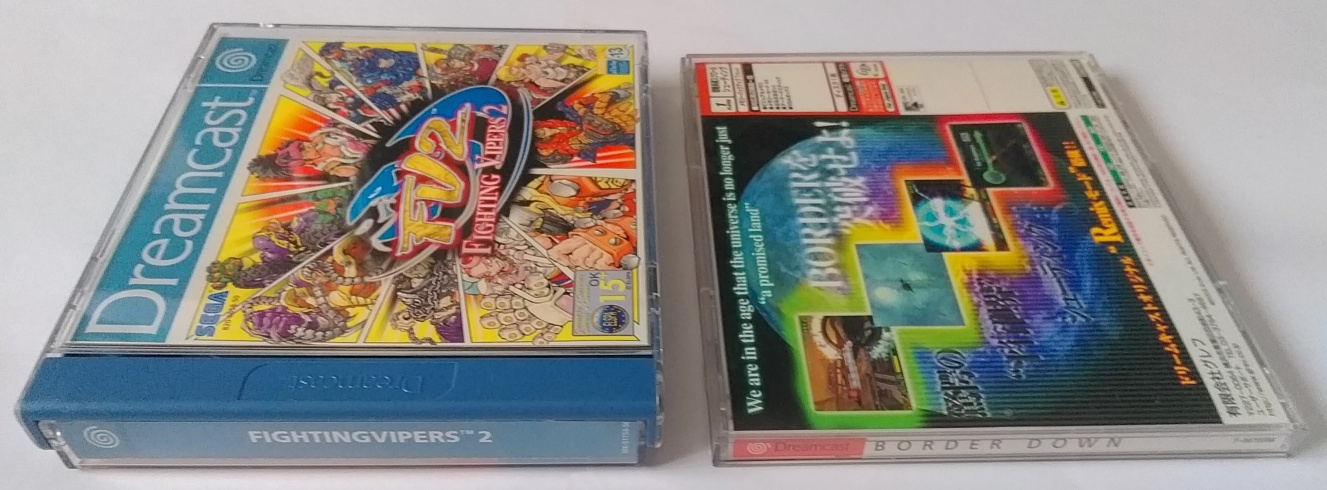
Left: European Case. Right: Japanese Case.
Dreamcast History X: Unreleased Games
As with any machine there are a number of unreleased games that exist in various forms. Like the Saturn, some fans are shocked by what was never released. Some games are even 100% completed have since been leaked onto the Internet.
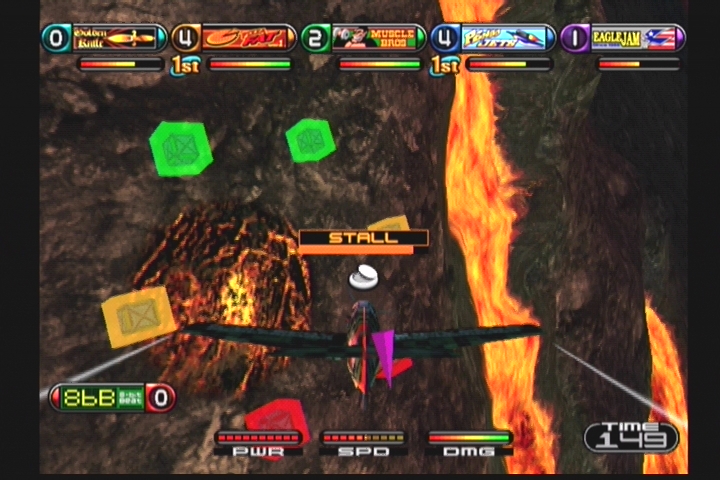 |
Propeller Arena from AM2 is one of the lost gems of the era. It is a bi-plane dog fighting game that made use of the system's online abilities. Four players were able to use the system's microphone accessory to talk to your wing men. The game was cancelled in the wake of 9/11 due to the ability to collide into buildings. |
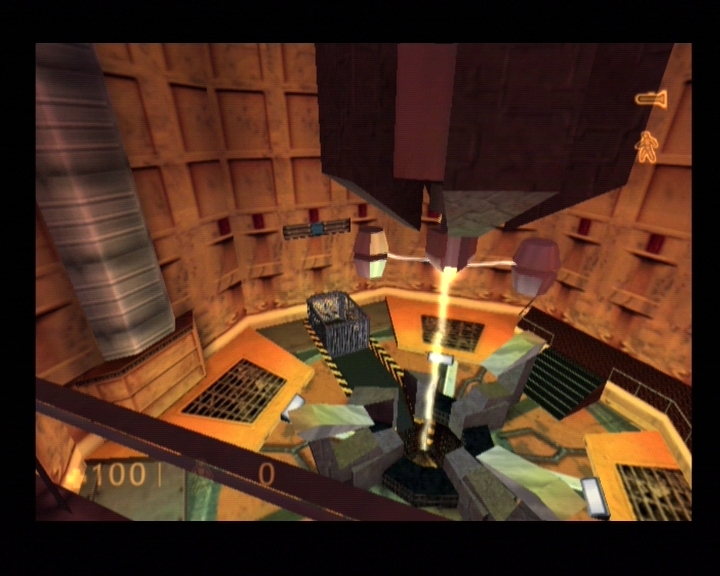 |
Half-Life which was massively popular on the PC had an upgraded port which was even completed and sent to magazines to review it! It was suddenly cancelled and released on PS2. |
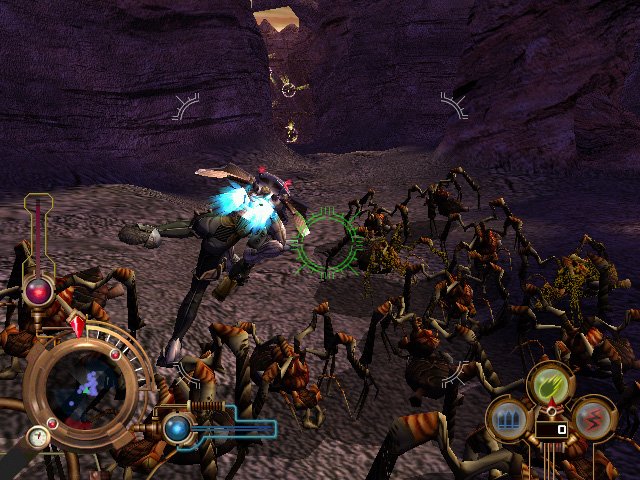 |
Gun Valkerie was a jet-pack based third-person shooter designed to make use of the joypad and light-gun simultaneously. It was later resurrected and one of the first games SEGA released for Xbox. |
Geist Force was announced around the same time as the console itself and showed many similarities with Star Fox/Star Wing. Little is known except the screenshots showing tonnes of stunning mountainous scenery. It was apparently cancelled early on due to not meeting SEGA's own quality standards, however in 2012 a group completed the game and released it!
Other titles include, Virtua Fighter 4, Take The Bullett, Picassio, Castlevania Resurrection, Tekken Tag Tournament, Jambo! Sarari and a 3D version of Streets of Rage.
Other rumoured ports included Planet Harriers, a sequel of sorts to Space Harrier that was one of SEGA's showcase arcade titles of the time.
Home Development (Other Projects)
One of the unique aspects of the Dreamcast is the active homebrew development scene since 2000. The height of popularity has since passed as developers slowly move to other platforms but there are some significant projects still in development. The homebrew scene is very much keeping the system alive and kicking. This resulted partly with the system being designed to be easily programmed for but moreover with its ability to boot from a standard CDR whereas all other system's require a firmware hack or mod chip. As such hundreds of amateur projects exist and some have become commercial releases such as Feet of Fury and Cool Herders. Some examples are detailed here the majority of which are free for download. For many more check out http://www.lavalit.com and http://www.boob.co.uk/games.html.
Beats of Rage is essentially a clone of Streets of Rage and was originally created by Senile Team as a free open source game engine. The original version had 3 characters (sprites) from SNK's The King of Fighters with some other graphics taken from SEGA's Streets of Rage series. It is available for several platforms including PC and GP32. Being open source it has been modified by multiple people. For example, there are versions with playable X-Men characters. It can still be downloaded at http://www.senileteam.com/beatsofrage.html.
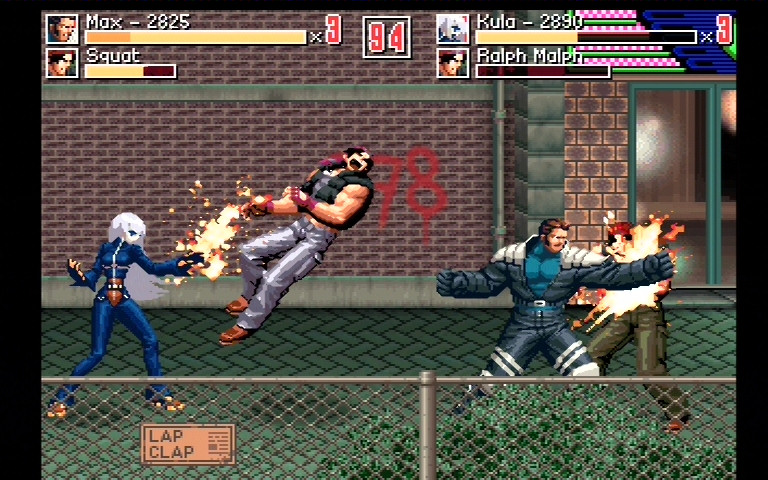
Beats of Rage
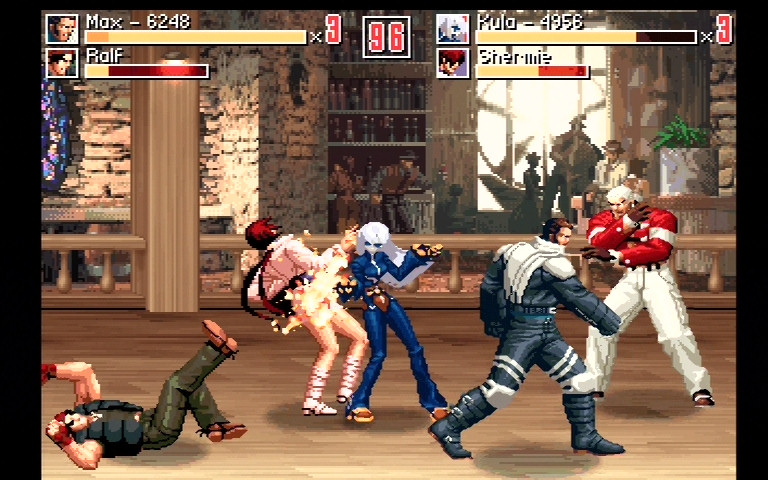
Beats of Rage
Another example is GLQuake; a port from the PC and one of three versions of Quake for the Dreamcast. The game comes playable with the shareware episode; however, if you own Quake for the PC you can simply include the complete .WAD file for the full game. Dreamcast mouse and keyboard are supported!
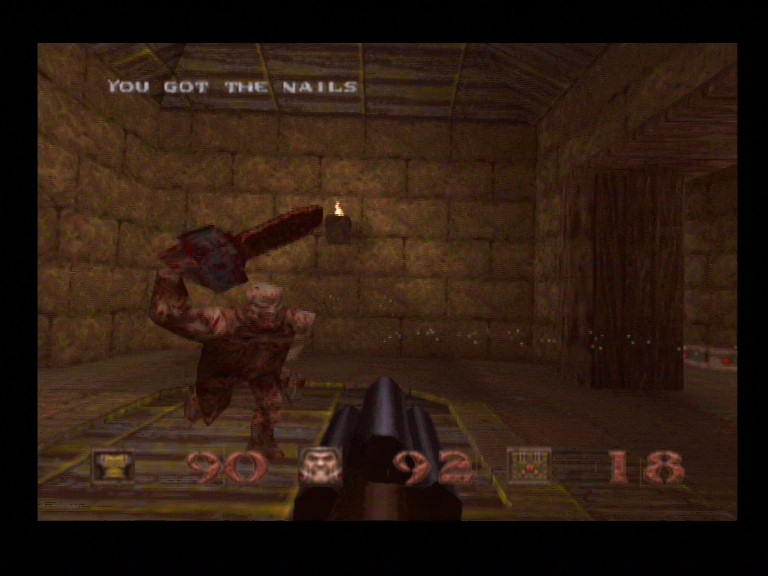
Quake (Titanium Studios Port)
A highly modified and optimised version of the game entitled DC Evolution Quake can be found online for free and as part of the enhancements includes hundreds of Deathmatch maps!
Utilities include DCMP3 which as the name suggests is an MP3 player. Simply burn all your tunes onto a CDROM and play accompanied by an equaliser. Numerous VCD players with varying capabilities exist and can still be found online. This may not sound like much today but VCD's were popular between 1998 and 2000 as DVD was still relatively expensive.
Emulators had typically been limited to PC's due to processing power until the Dreamcast. [Console] emulators are typically tricky to get running at their full potential and the use of a keyboard can sometimes take something away from the experience. Playability is improved on the Dreamcast by having less to setup and the use of the control pad.
There exists an array of emulators including computers such as Atari ST and Commodore 64, and consoles including Master System, Game Gear, Nintendo NES, Neo Geo Pocket Colour and Super Nintendo. SEGA themselves used a Mega Drive/Genesis emulator for the SEGA Smash Pack compilation - just not a very good one.
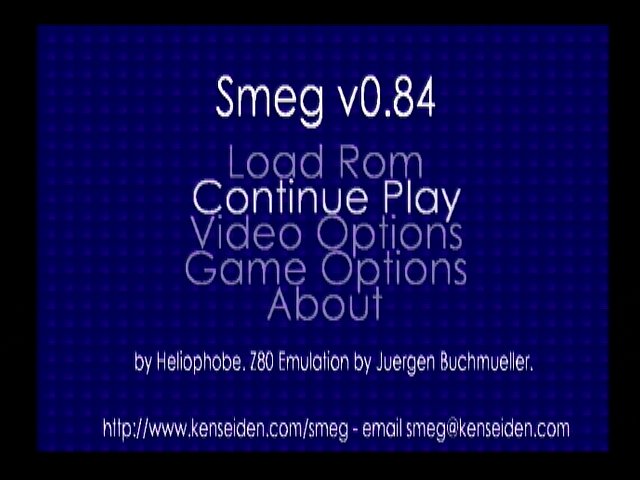
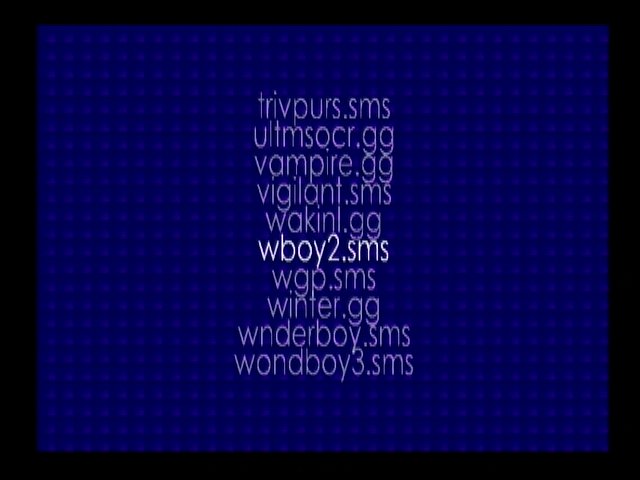
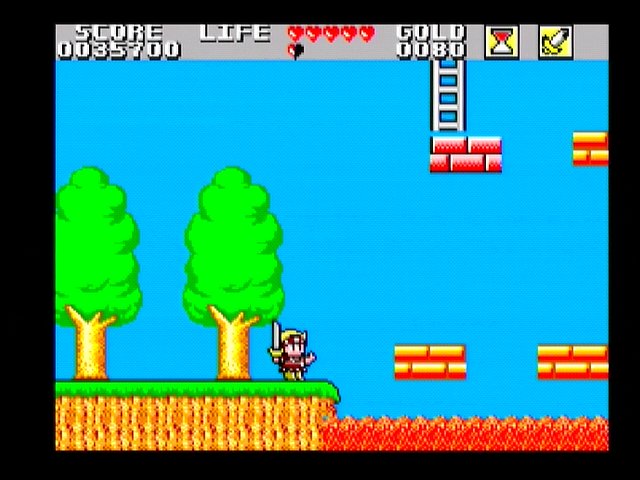
SMEG - A Master System and Game Gear Emulator for Dreamcast
There is a semi-famous story regarding the Playstation emulator for the Dreamcast. A project called Bleemcast! (derivative of the emulator Bleem! on PC) was an independently developed commercial emulator that aimed to provide enhanced graphics. It had three official releases, each optimised for a specific Playstation game: Gran Turismo, Tekken 3 and Ridge Racer High Spec. Beta versions of many other games are known to exist.
There were some quality issues as the emulator was incomplete but it was an interesting concept nonetheless. Checkout this You Tube Video of Bleemcast! running Metal Gear Solid. Ultimately Sony had the company shutdown through continued law suits much like they did with specialist game importer Lik Sang.
For some more information about current projects check out some of the following links:
http://www.dreamcast-scene.com
Links Taken from GamesTM#77
Kallist Free Development OS
Many homebrew developments have benefited from the use of the KallstiOS free development system. One such example is Feet of Fury which has had a commercial release.
For much more information visit the official website: http://gamedev.allusion.net/
PAL-60 Mode
Is an unofficial TV mode for Europe. This basically allowed full screen, full 60Hz speed experience but with the PAL colour system thus no need to import a foreign console and have an NTSC compatible TV. Such TV's are standard now but rather expensive back in 1999. As this mode is unofficiall some much older TV's were not compatible and had colour problems. Thankfully this is a non-issue with the sets of today. Many of the Dreamcast European games support this mode and other companies have since included this as standard since SEGA introduced it.
Latest Releases (2002-2012)
Still, SEGA's mighty white box continues to live on almost 10 years after its official discontinuation. Every game released has been dubbed "the last Dreamcast game ever" - the Dreamcast is now to shooting fans what the Neo Geo is to beat'em up fans.
The new releases are into Japan so you will need a boot disc or chipped machine if your machine is from a different territory. To obtain any of these titles check out sites Play Asia, GOAT Publishing and of course Ebay.
Below are some of the latest games released after discontinuation to grace our beloved white box in descending order of release.
Additionally, some games for example, Chu Chu Rocket have had their online capabilities restored in 2016 by fans. Phantasy Star Online and Quake 3 were other examples and work continues to bring more games back online.
Sturmwind (Redspotgames)
To be released in 2013, it is a classic shoot'em up with 2D gameplay, powered by a hybrid 2D/3D engine. Gameplay is dynamic in the sense that it is not simply a vertical scrolling game.
There are plenty of weapons to throw at some pretty huge bosses, some of which are not your typical giant robot or contraption but some massive creatures too. There is also an award system with extra unlocks to be had with support for high scores to be ranked online.
There is a standard edition and a limited edition which includes soundtrack, printed models and tactical guide book all of which is supplied in a special magnet box.
Videos on Youtube of this game running look spectacular!
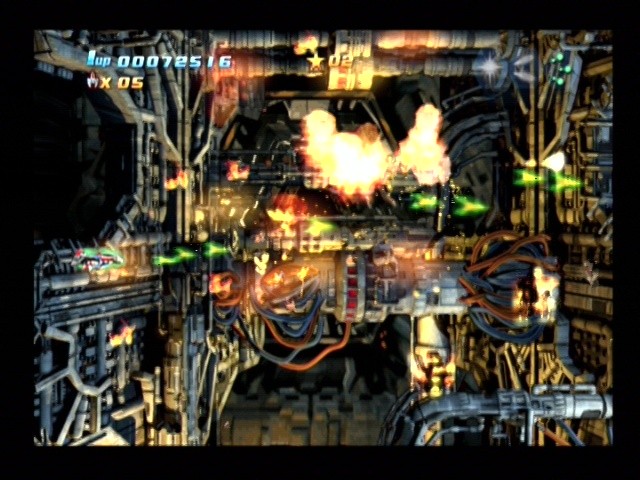 |
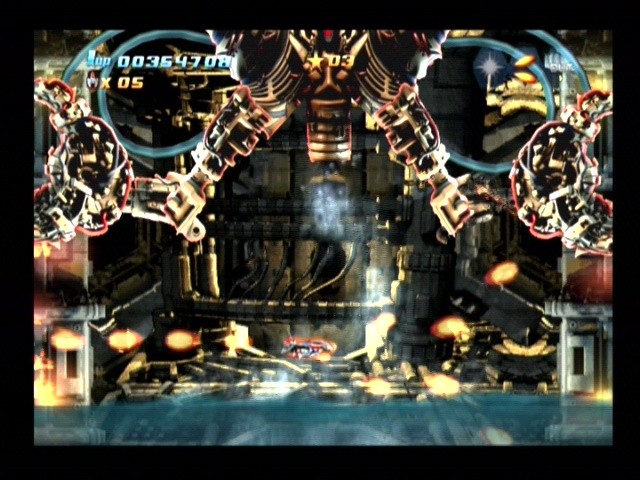 |
This could turn out to be the last official Dreamcast release and what a way to go out. It truly shows how brilliant this system is.
Gunlord (NG:DEV.TEAM) (2012)
NG:DEV.TEAM present a rich 16-Bit looking action platform sprite-fest previously available on the Neo Geo AES and MVS prior but at a prohibitive cost.
It's simply: jump, shoot and explore. The action is well balanced with typical platform elements like spikes, bottomless pits and hidden platforms to name a few. Its less run'n'gun and more exploration which is somewhat optional but highly recommended as there are plenty of secrets stashed within each of the nine levels including essential extra lives.
Anybody familiar with Turrican and Metal Slug series will find this a pleasant experience but the more astute will detect hints of several other classic games too.
A fantastic amount of detail is in these sprites all easily handled by the DC's internals at a silky smooth 60fps.
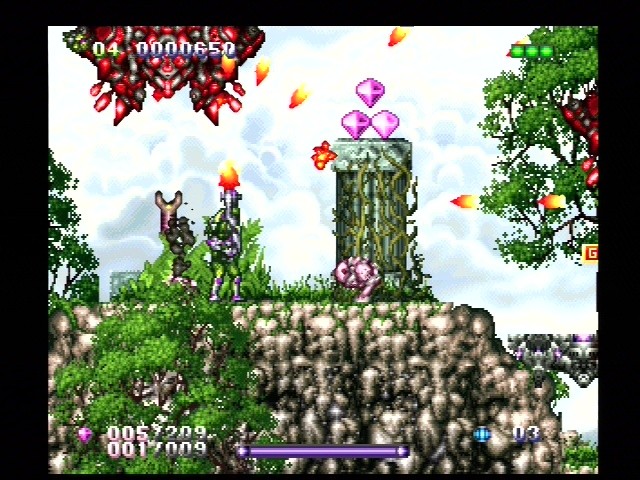 |
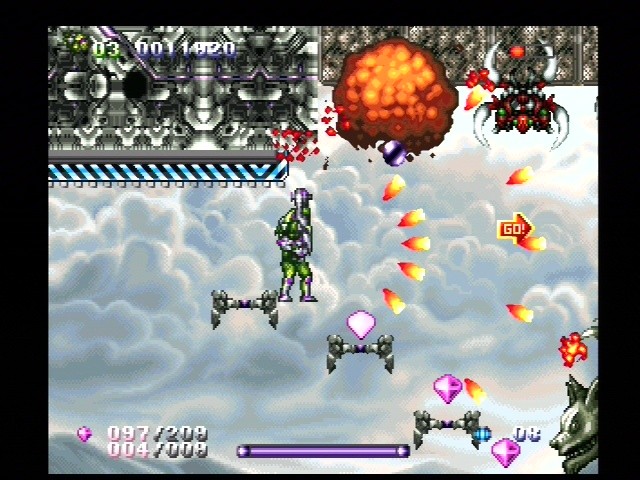 |
In order to submit a high score on the online leaderboard, the game gives a code that must be entered onto the developers website.
It is available in three editions: standard/regular, limited and the now sold out Dragon Box Collector's Edition.
Much more information can be found on the official website: http://www.gun-lord.com.
Fast Striker Ver 1.5 (NG:DEV.TEAM) (2011)
First developed for the Neo Geo MVS and ported for the Dreamcast, this game has the subtitle of "Mania Shooting Game" which is an indication of the type of game it is.
Our ship utilises a forward shot, backward shot where tapping a shoot button gives a wide burst whilst holding down a shoot button gives a more powerful narrow spread at the expense of manoeuvrability. And this is used in conjunction with a short duration shield to make it through waves of bullet spewing enemies. Switch accordingly to the enemies on screen.
It looks a little murky but when you consider it was originally made for a 20+ year old 16-Bit system it makes sense. It has just 6 stages (and is not alone in this genre) and somewhat unremarkable but crucially it delivers the gameplay as a short but satisfying blaster Four difficulty levels and secrets to be found - an interesting tweak for a shooter.
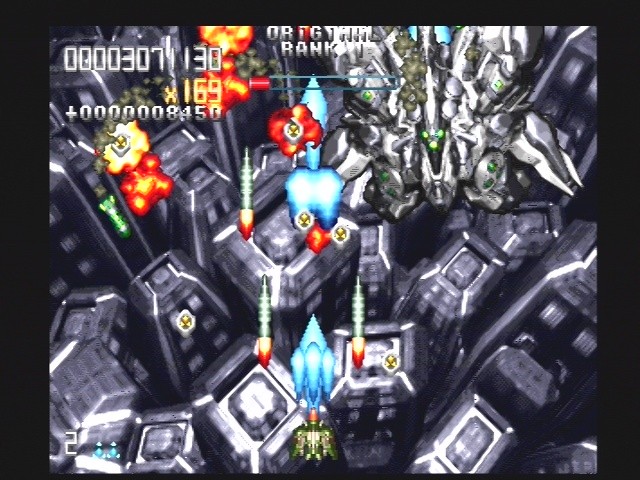 |
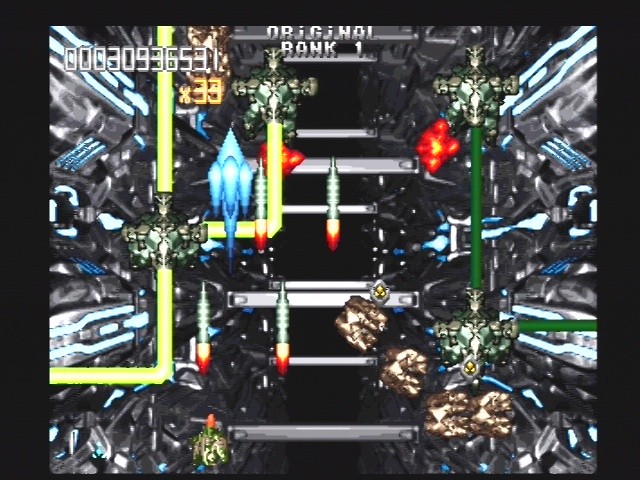 |
Interestingly the game comes in a DVD case rather than the standard jewel CD case (perhaps NG:DEV will distinguish themselves this way) and the quality of the packaging is great.
In order to submit a high score on the online leaderboard, the game gives a code that must be entered onto the developers website.
Much more information can be found on the official website: http://www.faststriker.com.
Under Defeat (G.Rev)
From the same developers as Border Down comes another shoot'em up direct from the arcades. Under Defeat is a full on, thunderous helicopter shooter in a similar vein to Zero Gunner 2 with the ability to rotate your aircraft slightly as a twist on the vertical shooter.
Full 3D backdrops meet 2D gameplay with super smooth graphics, all with a very fitting soundtrack that compliments the pure old-skool addictive gameplay. Rain bullets down on ground forces, sea forces, engage air forces and leave them burning.
Enhancing the direct arcade port are options for different displays, practise mode with stage select and saved replays to help improve your gameplay.
The game is also available in a limited edition format which also includes a soundtrack cd, sticker and poster.
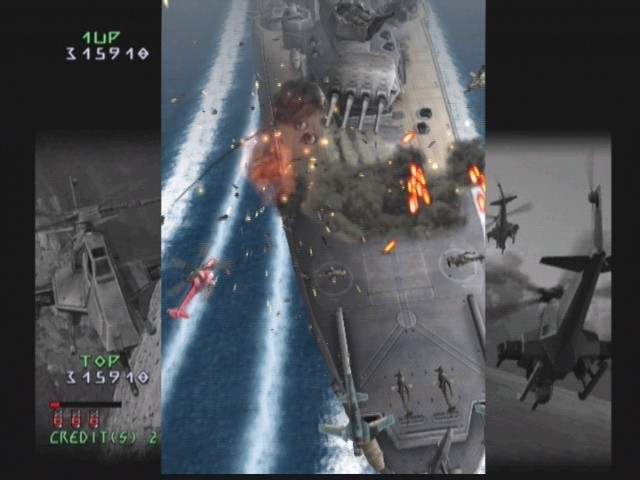 |
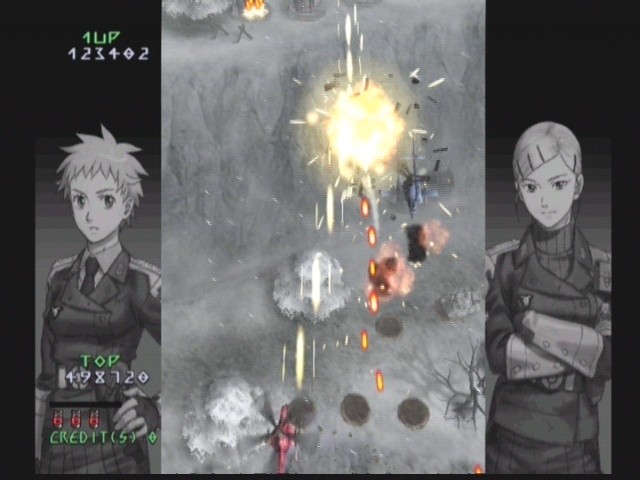 |
An upgraded version was released in November 2012 entitled Under Defeat: Deluxe Edition for Xbox 360 and PS3. It has a high definition make over with the view of the game greatly expanded for modern TV's. The realism of the destruction from explosions has been improved and there is a new pilot.
The package has a few extra goodies too: a soundtrack CD, a digital art book, and curiously Letter from G.rev CEO and Under Defeat executive producer, Hiroyuki Maruyama.
Radiligy (Milestone) (2006)
February saw another old-skool vertical shooter hit the Dreamcast ported from the Naomi arcade board. Whilst the gameplay does not bring anything new to the setup this particular game throws a graphical twist on the genre using cell-shaded graphics used in the likes of Jet Set Radio.
Two special editions were also available in Japan from SEGA Direct - one with a phone card, and another that was packaged with a refurbished Dreamcast console and phone card.
Cool Herders GOAT Publishing
The object of the game is to round up your wayward sheep by means of your polite powers in this fast paced party game.
The game has a single player story mode, as well as multiplayer party modes (2 and 4 players) with some secrets to be unlocked too.
Cool Herders was an independently developed game and was granted a commercial release because of its high quality and at a budget price.
You can buy the game and find out more at the GOAT website.
Chaos Field (Milestone) (December 2005)
Another Naomi title ported to the Dreamcast. It is a frantic vertical shoot'em up in a similar vein to Castle of Shikigami laden with fast graphics and special effects.
The gameplay takes place on two fields or planes; the default (easier) field and one much more difficult, but where much more points can be earned.
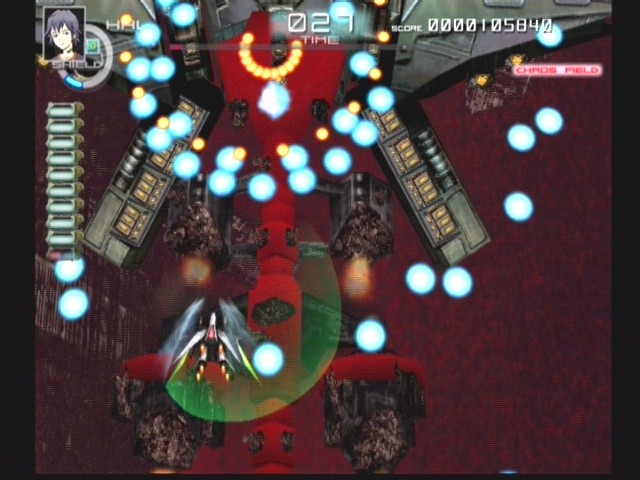 |
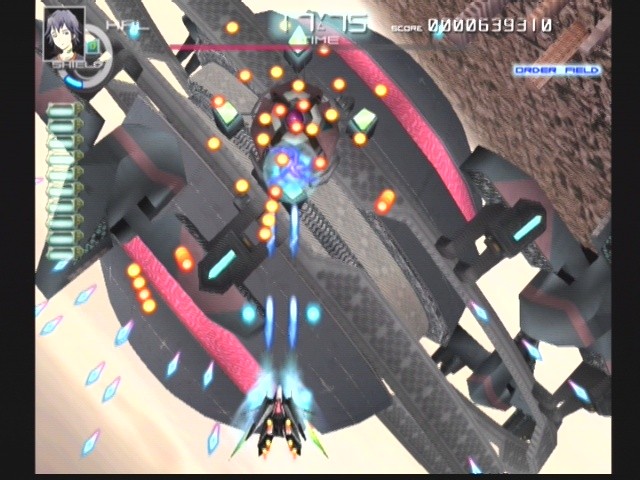 |
Later versions were released for PS2 and Gamecube which was the only console to have a US release of the game.
Trizeal (Triangle Service April 2005)
Is another vertical shooter straight from the arcade. It is classic old-skool shooter action where your ship is equipped with multiple weapons that can be combined and powered up along with a devastatingly powerful bomb. Unfortunately it does not offer anything new to the genre and the graphics are somewhat simple.
You can find out more about this game at the official website http://www.triangleservice.co.jp/
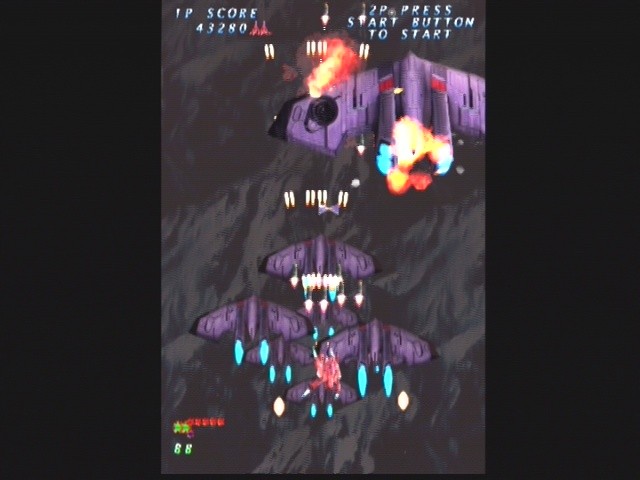 |
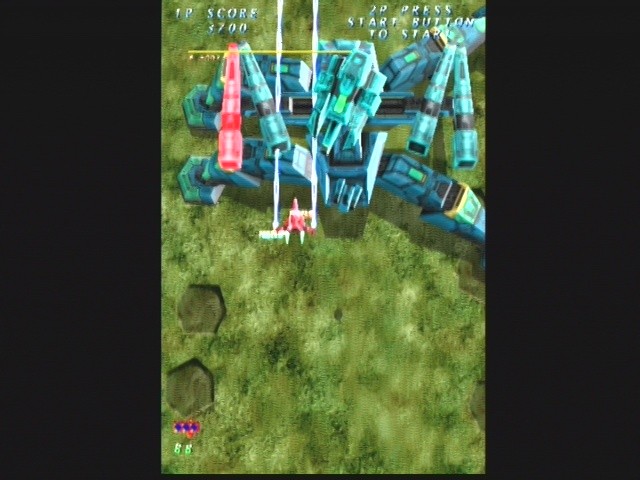 |
Psyvariar 2: The Will to Fabricate (Success) (2004)
Another traditional vertical shoot'em up where you control a battle medium drive suit (MDS). Blast through wave upon wave of enemies in ultra intense action. The Buzz system - the method of filling the power-up gauge by "Buzzing" the edges of your mecha against both their craft and their bullets - affords a very brief period of invincibility whist powering up.
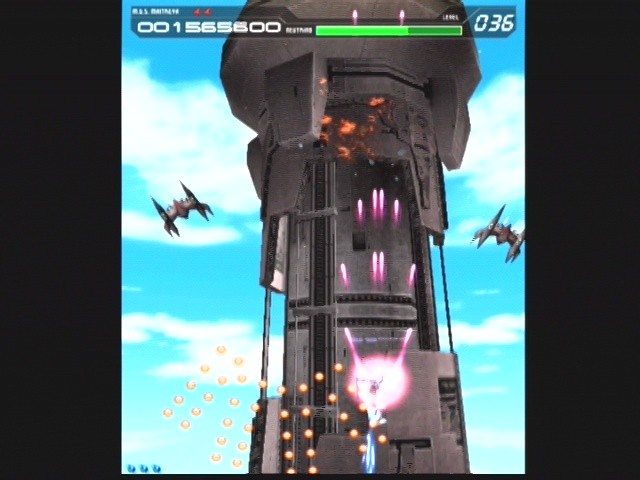 |
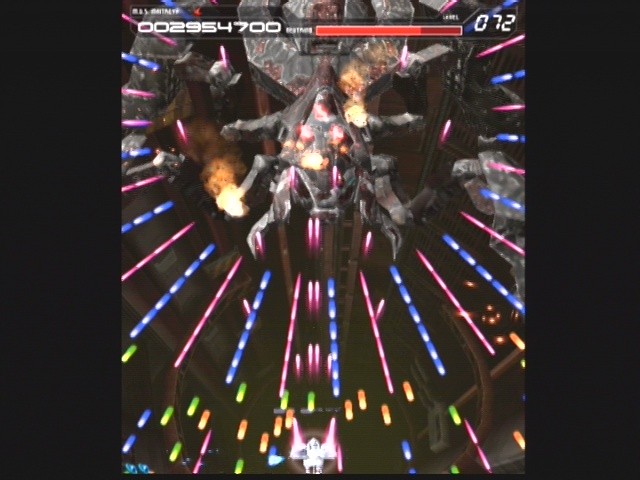 |
An upgraded version was later released for PS2.
Puyo Puyo Fever (SEGA/Sonic Team 2004)
From Sonic Team this is another incarnation of the Puyo Puyo (from which Dr Robotniks Mean Bean Machine was cloned) that has hit just about every gaming system ever released.
The game is 2D at its core with 3D graphics. You match up the coloured gems to make them disappear from your side of the screen before your bin becomes full. The fever element allows you to intensely counter attack your opponent when the fever gauge is full.
It was released on the Dreamcast by SEGA as a final gesture to its fans.
Castle of Shikigami 2 (Shikigami No Shiro 2) (Alfa System) (2004)
Is the sequel to the arcade shoot'em up Castle of Shikigami, Shikigami No Shiro 2 which was originally released in the arcades, first ported to the Gamecube, then later released for the Dreamcast, Playstation 2, Xbox and PC. Each version had different limited edition packages - the Dreamcast version included a soundtrack in its limited edition. It was also released in the US on the PS2 under the name of Mobile Light Force 2.
Also like with Ikaruga, an appreciate DVD showing you how some expert players play the game through is available.
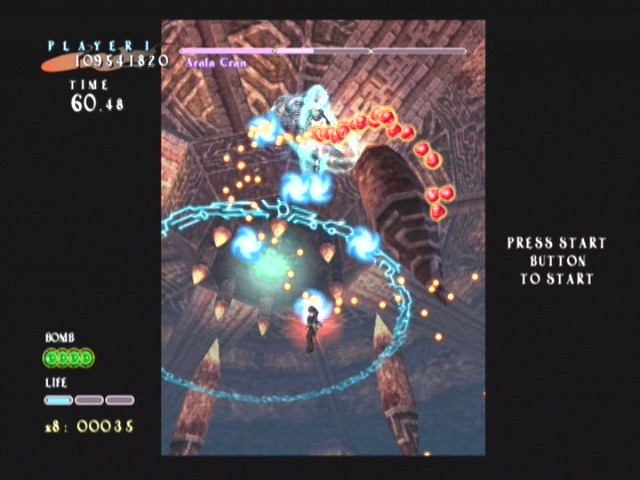 |
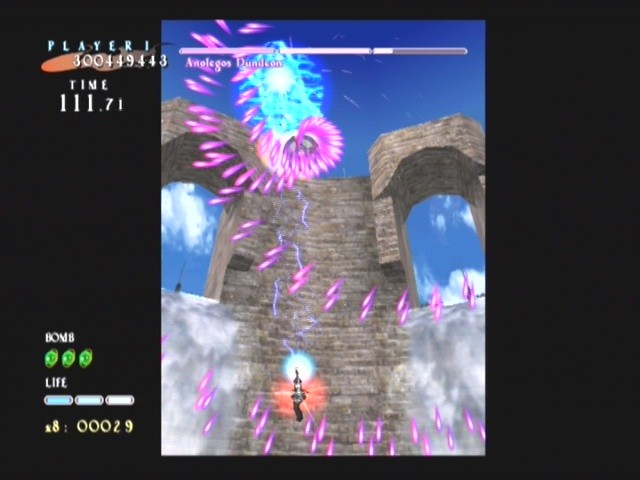 |
Baldr Force EXE (GIGA and Alchemist) (2004)
Baldr Force EXE is an adaptation of the PC version, in which you control robots equipped with over 60 different weapons. The game also contains SLG elements where the player needs to discuss with people to advance in the story. The gameplay has been modified in order to fit the Dreamcast controller and there are some additional exclusive features.
Feet of Fury (Cryptic Allusion Games)
This game is the first ever game developed by the Home Brew community (fans) to be released as a commercial title.
It is basically a dancing game in the vein of Dance Dance Revolution using a Dance Mat, standard controllers and special modes keyboards from a library of 22 songs. The Dreamcast dance mat can be a rare item to find.
It is still available to order from the official website http://feetoffury.com/
Border Down (G.Rev 2003)
A horizontal shoot'em up and perfect conversion of the Naomi original, similar in style to the likes of R-Type it is a blend of 2D gameplay and 3D graphics.
Stages have multiple pathways with large bosses to take out. Called the Border System - the route you take through a stage depends on if you lose a life. Each time your ship is destroyed you are sent through a more difficult route.
This version also features a Remix mode which is a more frantic version of the arcade mode with the help of additional Power-Ups.
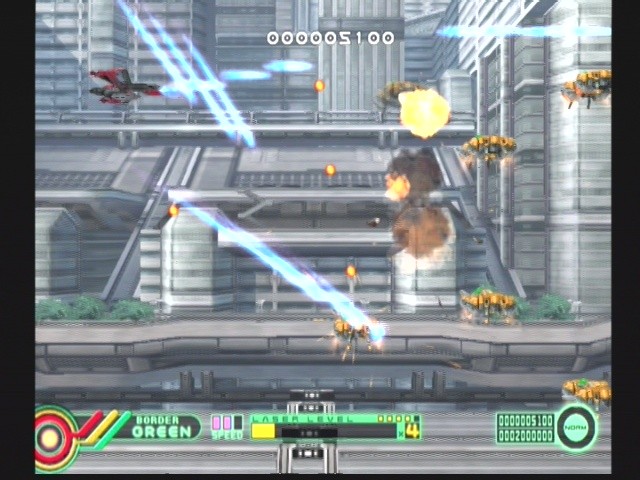 |
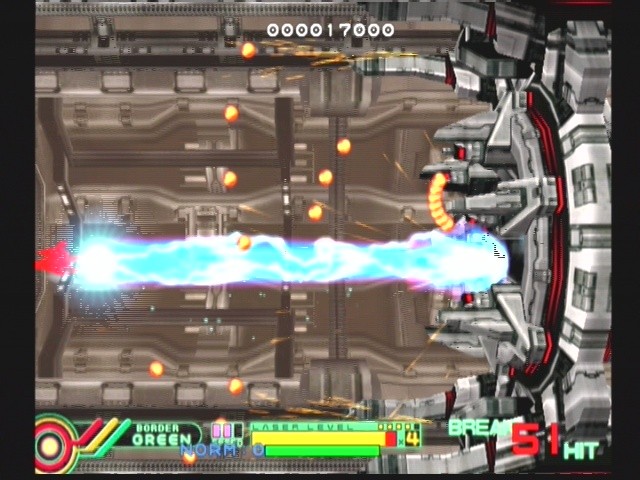 |
Ikaruga (Treasure 2002)
Adding a twist to the old-skool vertical shooter is the spiritual sequel to the exceptional Radiant Silvergun on the Saturn.
English versions have since been released on the Gamecube, Xbox Live Arcade and Android smartphones.
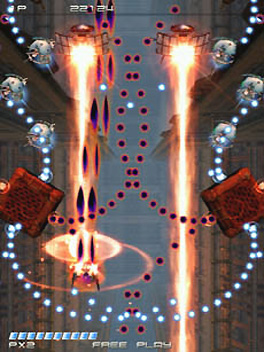
For more information checkout the Ikargua Page.
GALLERY
European Game Flyers Gallery
These are some of the flyers that were distributed along with the games for promotional purposes.
Click on any of the images for larger versions.
Old Man Release Flyer A |
|||||
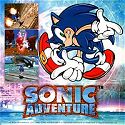 |
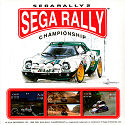 |
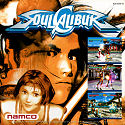 |
|||
Old Man Release Flyer B |
|||||
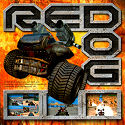 |
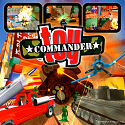 |
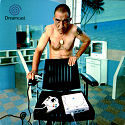 |
|||
Kids A |
|||||
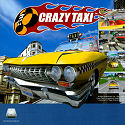 |
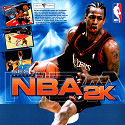 |
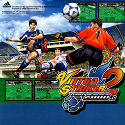 |
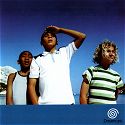 |
||
Kids B |
|||||
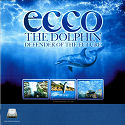 |
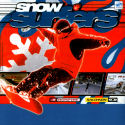 |
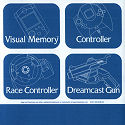 |
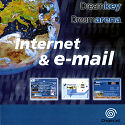 |
||
Space Channel 5 Side A |
|||||
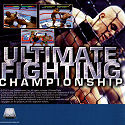 |
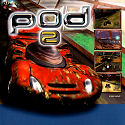 |
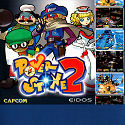 |
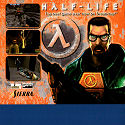 |
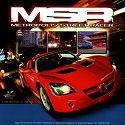 |
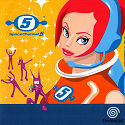 |
Space Channel 5 Side B |
|||||
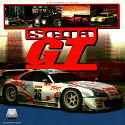 |
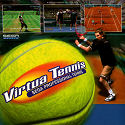 |
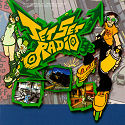 |
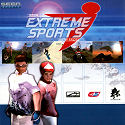 |
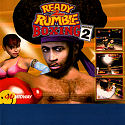 |
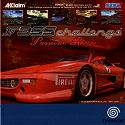 |
Coming In 2001 Side A |
|||||
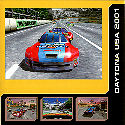 |
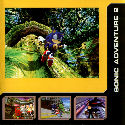 |
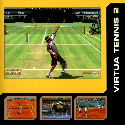 |
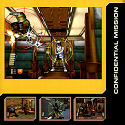 |
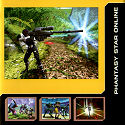 |
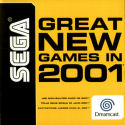 |
Coming In 2001 Side B |
|||||
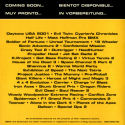 |
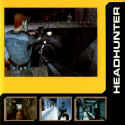 |
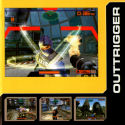 |
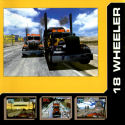 |
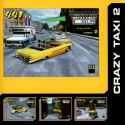 |
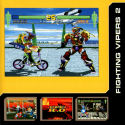 |
Dreamcast Collection
Dreamcast Collection was released for the Xbox 360 and PC in 2011. It is a compilation of four games that were released individually on Xbox Live Arcade, PSN and Steam. It contains: Crazy Taxi Sonic Adventure, SEGA Bass Fishing and Space Channel 5 Part 2.
All four of these games were Dreamcast classics back in their day. The package does not use a Dreamcast emulator instead the games are ports of their PC counterparts. Still, they are presented in HD graphics at 60FPS and 5.1 audio with the usual minimal network options such as leaderboards and achievements.
Unfortunately the compilation as an entity has not received favourable reviews and can now be found new for as little as £5 so it is unlikely that SEGA will produce another similar package even though more similar Dreamcast re-releases are happening.
Burning Dreamcast Games
Knowing how to burn a Dreamcast game or application is essential to being able to utilise any of the homebrew releases and burn backups. Thankfully the process is much more straightforward than a Saturn game but the makeup of a disc is rather different.
Important
Note that some Dreamcast's had their ability to boot from a CD-R removed to counter the rampant piracy of games. As a general rule, consoles manufactured before October 2000 have the ability. A quick search online may allow you to check the booting ability against your console's serial number.
Games and applications are supplied as disc images (more info on disc images and burning can be found in the Saturn Burning Guide) and can be in a few disc formats that must be burnt to a CD-R.
Detailed below are the settings for the two burning programs that use the most prevalent images.
An image my also be described as either self-boot which will boot automatically like a real game or non self-boot which will require the use of a boot disc such as Utopia.
One critical aspect is the use of good quality media (even more so than other SEGA consoles) such as Verbatim, Intenso or Taiyo Yuden. It will reduce the risk of read errors which may prevent the game from booting at all. No CDRW's can be used.
The most popular image format is .CDI used by DiscJuggler. The latest demo of DiscJuggler can be obtained from http://www.padus.com/. The demo is limited to burning a 700MB CD at 1x speed which is ideal.
The other is .IMG used by Alcohol 120% which can also burn .CDI images very well. A trial of Alcohol 120% can be downloaded at http://www.alcohol-soft.com/.
The .NRG format that Nero Burning ROM uses can be read with 7Zip which is a freeware utility that can handle multiple compression formats.
There are utilities to convert from one image type to another. For example, CDI2Nero will convert a .CDI image to .NRG but can sometimes result in an incorrect image. Other programs may burn these types of images but it is recommended to use the native program for best results. The other is .ISO which is a standard and can be burnt by almost any program.
If using a different program than shown below you will have to interpolate/adapt the instructions to your chosen application, however, this may not be successful.
An essential option in any program when burning Dreamcast games is the enabling of over burning discs. Look in the Options (possibly Advanced/Expert Options) of your program to enable this.
To burn a .CDI using DiscJuggler 6.00.1400 (current) launch the program and select Burn disc images.
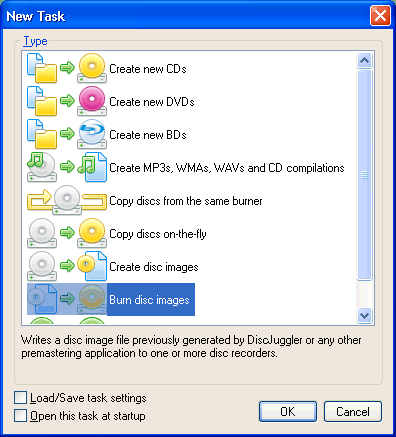
Disc Juggler - New Task
Select the source file and set the burn settings on the Advanced tab.
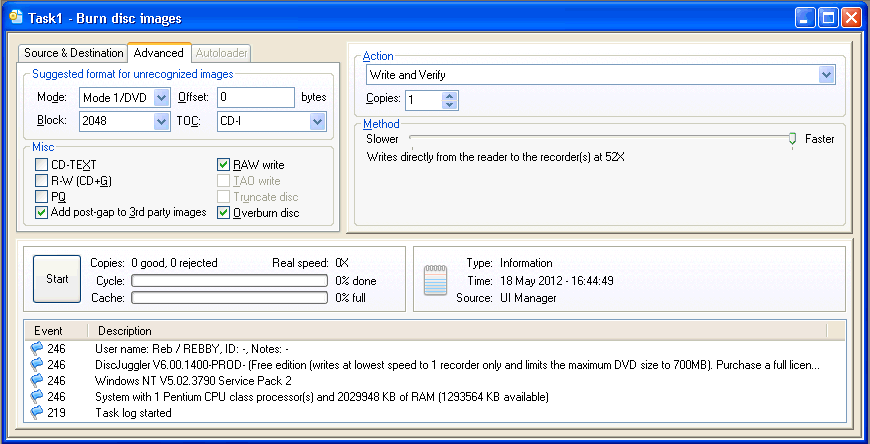
Disc Juggler - Burning Settings
Mode: Mode 1
Block: 2048
Offset: 0
TOC: CD-I
Raw Write: ON
Overburn disc: ON
Add Postgap to 3rd Party Images: ON
Some differences in these settings are known to work also, however, these above resulted in a working game and seem to be the most compatible.
Write (with optional verify) at 4X Speed Max. Do not exceed 8X if possible.
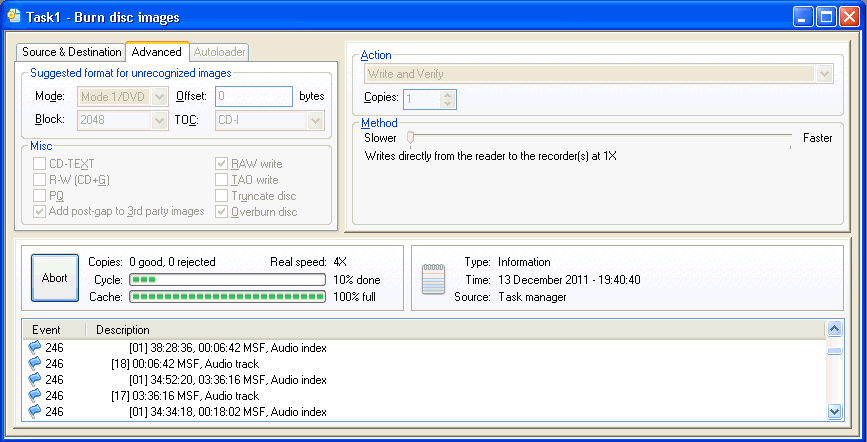
Disc Juggler - Burn in Progress
In the shot above a .CDI image (Fast Striker) is being burnt.
To burn with Alcohol 120%, in the write dialogue box, set Write Method To Raw/Dao and burn at 4X Speed. Do not exceed 8X if possible.
Users Mods/Projects
One of the more unique aspects of Dreamcast hardware is its user's ideas of re-designing it in their own image. Internals of Dreamcats's have been made into a portable console, put inside an iMac monitor casing or inside PC drive bay to name but a few examples. A simple Google search will yield some very imaginative and impressive examples.
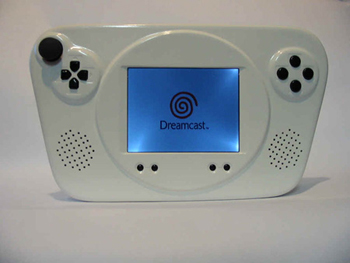
Portable Dreamcast
Treamcast
A Treamcast is a Dreamcast with a screen attached with a few modifications and comes in three variations; white screen, a widescreen and a higher quality black screen. They cost in the region of $200. They are totally unofficial and original from China.
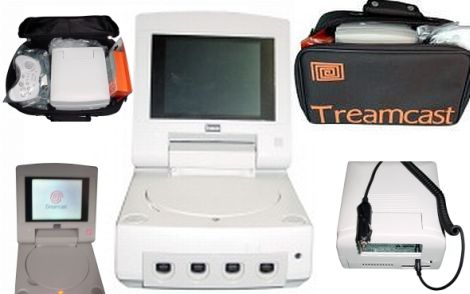
Treamcast Package
An in-depth review and more pictures can be found at http://www.superufo.com/review_html/Review_of_Portable_Treamcast.html.
iVMU
VMU's are also modded but to a lesser extent and an example of VMU modding is the iVMU which has the internals of an iPod Nano inside VMU casing.
About NAOMI

SEGA's acronym for Naomi is New Arcade Operation Machine Idea. It also is Japanese for "above all beauty". SEGA first showed the Naomi board at JAMMA (Japan Amusement Machinery Manufacturers Association), which took place from September 17th to the 20th, 1998 in Japan.
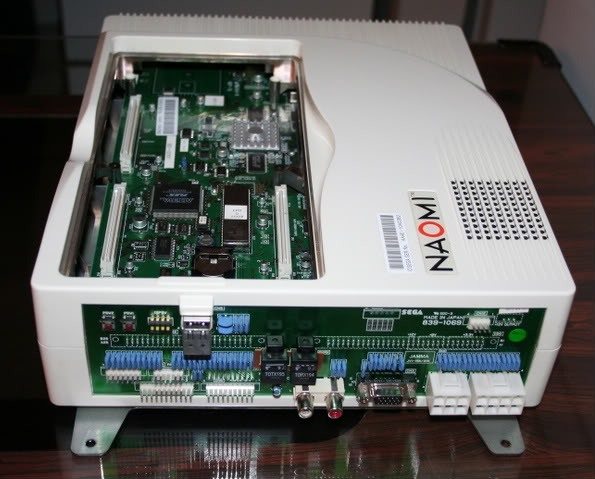
NAOMI Arcade System
Designed to not only provide a high performance at an affordable price but also supply the Dreamcast with arcade hits. The Naomi architecture is very flexible in that a cabinet can have anywhere from 1 to 16 boards.
The Dreamcast shares the same CPU, GPU and audio processor. The main differences are the amount of RAM for work, graphics and sound. Games are stored on ROM chips rather than GD-ROMs.
Some 20 companies such as Capcom, Tecmo, SNK, Treasure, Psikyo and Sammy signed up to develop for the board. The first game that was released by SEGA was The House Of The Dead 2.
It was superseded by the all powerful Naomi 2 board in 2001.
VS PS2
There was an interesting article that makes some technical comparisons between the Dreamcast and PS2. There are some facts such as the DC having some 40 times the video RAM (using compression) and operating at a higher standard resolution.
For more, checkout the article at http://dcemulation.org. Take into account the DC was shipped with a modem and online functions and the hardware was a year before and you can perhaps see just how much hype there was for so little that Sony's hardware actually was.
Booting Imports
The term "Import Game" refers to using a game not originally designed for play on your console - i.e. Japanese and American games on a PAL European Console, European games on a Japanese or American console etc.
Between 2001 and 2013 the new releases have only been into Japan so importing has become essential. Luckily, it is a relatively simple process through Ebay and online retailers.
There are 2 methods to boot imports: boot discs and mod chips. Generally a boot disc is all that is required. The Gameshark and DC-X are the better options as they have a high degree of compatibility and can be easily obtained off the net making mod chips fairly redundant as there is no need to take your machine apart that is if you do not mind swapping a disc upon boot up.
If using a PAL machine (50Hz) then there is the speed issue to consider. Some boot discs will not change the display rate of the machine so Japanese (and US games) will run at 50Hz. Most games have no issues and some will have borders. Only a few games that have more serious issues.
If you want to be able to run all games at full speed and full screen then you will need a US or Japanese machine (60 Hz NTSC) to use your boot discs on or have a mod chip fitted.
Gameshark
Also known as Action Replay. This is basically a game enhancing program (cheats). You boot up the program and activate codes that provide you with infinite health or lives etc. Codes for games can be found all over the net and a library can be saved to your VMU.
What the Gameshark also does is allow you to boot games from other regions and some homebrew projects. It will even switch the boot sequence to the orange logo from the blue or vise versa.
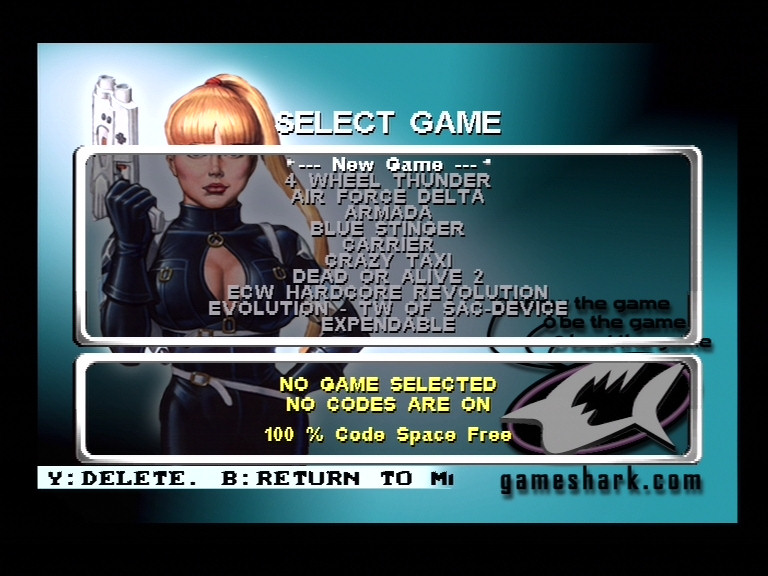
Gameshark Version 3.3
You can download the image from http://www.megagames.com/dc/dc_utils_bootcd.shtml and burn yourself a copy.
DC-X
Is a simple boot disc for foreign and non-selfboot games but has a very high compatibility, and can override some games where VGA output is not allowed.
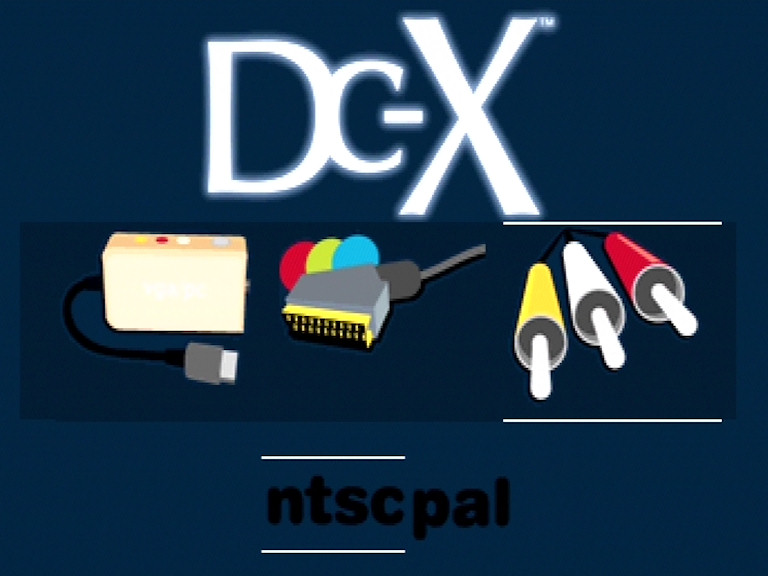
DC-X
An image to burn a copy can be found at http://www.emuparadise.org/
Utopia Boot Discs
These are used generally for booting backups that are non self boot and some homebrew projects and WinCE projects such as QuakeDC. The latest version is 1.5.
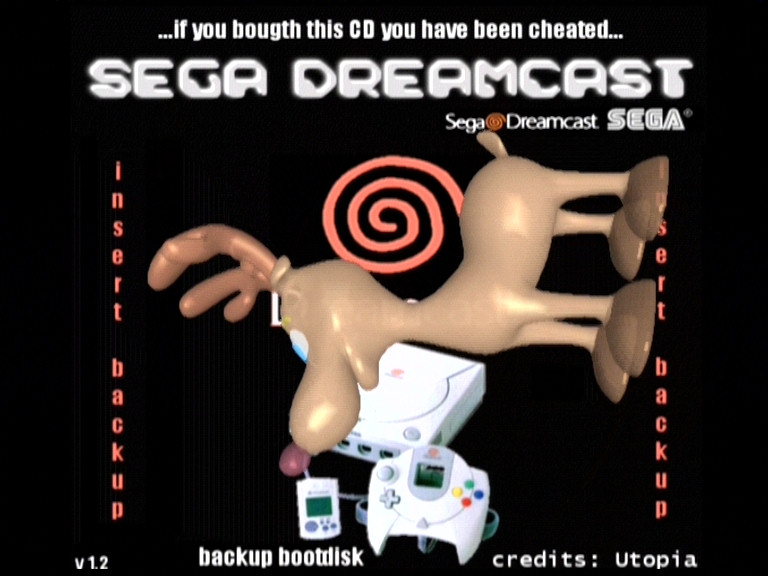
Utopia 1.2 (2.0)
You can download the image of the CD (2.5MB) from http://www.dcisozone.com/downloads/231/Utopia-Boot-Disk.html
Mod Chip
A 4-wire mod chip exists for the Dreamcast. It allows any game from any region to be played. Installation is universal across all Dreamcast's and is relatively simple (as far as mod chips go) but does require soldering onto the motherboard.
It can be bought from some online retailers for a price of around £15.
Some suppliers:
http://www.maxking.co.uk/dreamcastmod.htm
Instructions for fitting:http://www.maxking.co.uk/dreamcastmod.htm
Maintenance: Some Fixes
Many people have reported a problem with their Dreamcast's where the console suddenly reboots at random and sometimes refuses to read discs. This can obviously get really annoying.
This seems to be a common issue with regards to the PAL version though it may also affect Dreamcast's from other regions. I personally have owned a Japanese machine for over 10 years and it has never had this problem.
The following are a few solutions for making this problem go away. Luckily these are not too invasive to your DC. I have performed the routine on a number of machines and it appeared to cure the problem. For other problems there are websites such as http://www.fixya.com/support/p89340-SEGA_dreamcast_console which may offer solutions. Youtube may also be helpful in seeing how any fixes are actually performed.
Before resorting to opening your console, try these 2 simple things. It is also assumed that you know how to take your Dreamcast apart.
Clean the Laser
When the DC cannot read media properly and corrupted data gets into RAM, a reboot can occur. First off make sure the disc you are using is not badly scratched or has grime on it. Sometimes if grime builds up too much the DC will refuse to boot the game. If it is one of the early games then it's possible you have a faulty GDROM as there were some in circulation at the time of the machines launch in the PAL regions.
If the disc looks good then clean the laser as dust builds up on it over time.
The easiest way would be with a CD/DVD lens cleaner found in most £1 shops. This should remove a good amount of any dirt on there.
Alternatively, ensure the console is switched off and rub a cotton bud or small piece of fabric soaked in alcohol cleaner over the lense.
Operating Location
If you are running your DC on the floor with a chunky carpet then try elevating it. The fan at the side of the unit may be struggling to ventilate the inside properly. Giving it enough height so the fan is not covered up will help. Also consider if the console is running next to a source of heat.
Keep the Power Supply Clean
This is likely the main cause of your problem. As it gets warm inside the console some of the plastic sockets on the PSU board which holds the contacts of the PSU to the motherboard get loose and results in bad connections. In this situation a power cut occurs and triggers the reset.
Remove any disc, all the cables and modem and take your DC apart.
Next you need to remove the PSU board. This is the light brown board located to the left.
There are 2 screws which hold it in place and a set of clips down the left hand side. There is also a wire which clips into a small socket to the top.
Once loose, gently ease out the board. It will still be connected to the motherboard through 6 metal prongs in a white socket located to the front of the unit. Only a small amount of force is required.
Once the board is completely out you will see a thin piece of clear plastic. You should not have to remove it but if you do for some reason it is vital it goes back.
The white socket on the PSU board where the 6 prongs come through must be thoroughly cleaned. Use something like WD40 for good results. Give the 6 prongs a clean too.
Give the whole area a blow out to remove any other dirt that has built up over time particularly the PSU board. If you have a can of air duster then this will do the job nicely.
Reseat the PSU board and make sure there is good contact between the socket and the prongs. Screw, clip and attach the cable back in securing the PSU board.
Reassemble your console.
This should hopefully cure your rebooting problem. This sometimes is not a permanent fix but it should last you a good year or two depending on how much you use your DC. If the problem resurfaces then perform the same routine.
Power Supply Fuse
This, I have been told by technical people should not cause any problems yet having replaced the fuse the system seems more stable.
Replace the fuse on the power supply board with another 2Amp fuse cylindrical type.
Other Common Problems
Loss of Control / Port Dead
Another problem is the sudden failure of a controller. This is generally down to the controller port itself. Inside the console, the solder on the two joints either side of the actual port connector that connects to the board with the other ports seems to be rather weak. Over time as pads are pushed in and out a dry joint (broken solder) breaks the contact to the board and therefore connection with the pad.
This is a simple repair providing you have a decent soldering iron.
VMU "Screams"
If your VMU emits a high-pitch tone for a second or so when you power up your machine it will mean that the batteries inside the VMU are dead.
These are x2 standard CR2032 coin cell batteries 3V (CMOS batteries) and are located underneath a small panel on the back of the unit. You need to replace these in pairs. They can be bought easily from any hardware shop or £1 shop.
Dreamcast Web Browsers
Around the time of the system's launch there were some websites that modified their pages specifically to suit the resolution of the console. This gradually became less and less though users still needed the browsers to access their emails.
The browsers can be downloaded from the Internet for free. You will need to burn them as a game. See the guides above on how to do this. Below is a brief description of the main ones. Keep in mind that SEGA's official online networks no longer exist.
The browsers listed below are the official SEGA ones. Alternatively there is the XDP Browser which is still an active project and has updates from its developer. The official website of this project is at http://pc.psilocybindreams.com/.
Dreamkey 3
Used in Europe and is still a pretty basic browser with email functions. However, the latest release added support for customer to dial their own ISPs rather than SEGA only and supported Javascript with an early version of flash.
The original release of Dreamkey is considered obsolete. Version 3 could be obtained from SoE free of charge.
PlanetWeb 3.0
Was the official browser from SoA and is very similar in capabilities to Dreamkey. It also supported the broadband adaptor. It can be used in Europe on PAL consoles with no issues.
Its larger user base has meant that it has endured more and has had some cosmetic modificiations added by the Dreamcast community.
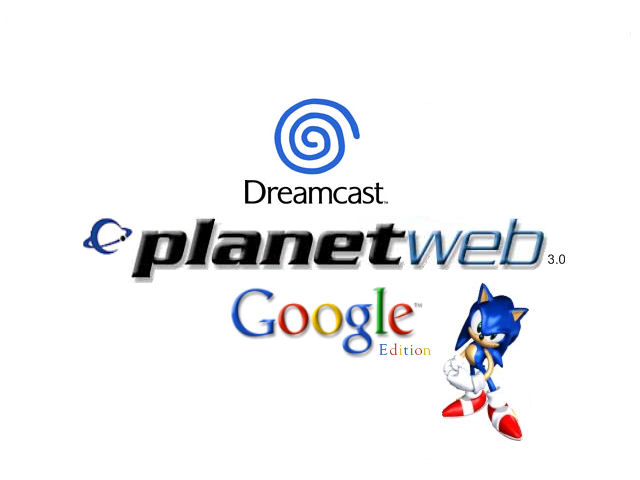
Browser Modification
Dream Passport 3
Was the official browser from SoJ. It was a program with many features. It had support for Dream Call which was an Internet telephone call service which included use of the Dreameye webcam. It could play MPEG videos, MP3 audio and supported the broadband adaptor.
It also allowed users to register for the use of the Mega Drive/Genesis emulator (included in the SEGA Smash Pack) and PC Engine emulator service to download ROMs.
A special premier version was compatible with PC and Mac.
How to Get Your Dreamcast Online (with Dreamkey 3)
Thankfully this is a relatively simple process. The only issue you will encounter is speed. Connecting via dial-up is slowwwwww and unfortunately the availability of the broadband adapter is scarce.
Setup Process
To get online with Dreamkey you can use any free dial-up ISP in available in the UK. An example is detailed in the following screenshots.
When Dreamkey has loaded you will be presented with the following options.

Select Manual/Setup.

Select Country. For the following settings to work UK must be selected.
After agreeing to terms and conditions select Modem Setup.

Select Setup. Modem Setup is rarely needed. Manual is a text based manual of the application.

Enter the user name: FREE1010 and password: dreamcast

Press Forward and enter the two phone numbers shown

Press Forward and enter the two DNS servers shown

Press Forward. This can be skipped as email accounts are not needed for browsing only.

Press Forward. This can be skipped as email servers are not needed.

Press Forward. The next screen is optional. If you save you will not have to repeat the setup process if you decide to use Dreamkey again. (VMU required).

Press Forward. The system should now dial the ISP and connect.


And here is this website rendered!
EMULATION
Dreamcast emulation has surprisingly been implemented to a fair degree though no emulator claims to be complete. SEGA have not officially used/endorsed any Dreamcast emulators in their releases. The recent ports of games to Xbox Live Arcade appear to be source code ports rather than a package with an emulator.
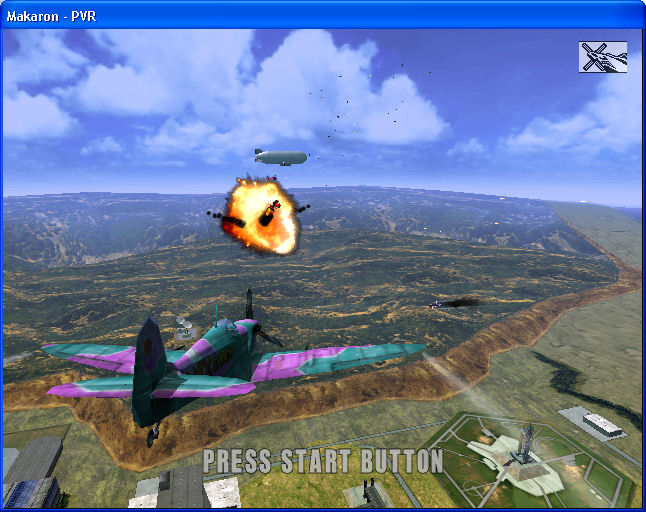
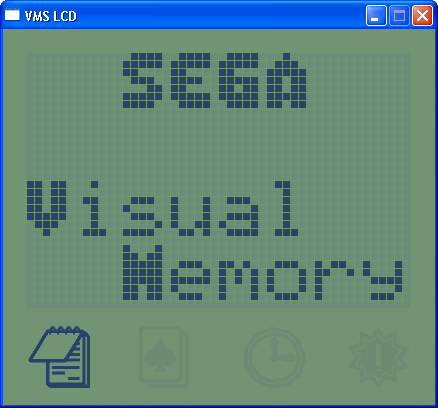
Makaron Emulator running Propeller Arena and a VMS
For more information and downloads checkout the Dreamcast Emulators page.
MISC INFO
LINKS
Below are some links for some excellent SEGA and Dreamcast related websites. If there are any links you would like to see added here please let me know.
Note: These will direct you away from this site.
Dreamcast Junkyard (Blogspot)
http://the-dreamcast-junkyard.blogspot.com/
An excellent site with almost daily updates with rare items, random projects of interest and overall good natured fun involving our beloved white box.
DC Emu
It is a multi-platform site which has the very latest news and downloads in Dreamcast utilities and homebrew games.
Dreamcast Talk
Talk about anything related to the console. As well as useful technical information it also has some extensive information of how to still play Dreamcast games online with available servers.
Dreamcast Scene
http://www.dreamcast-scene.com/
Along with the latest news and downloads it has a vast software database and also interviews with people who are still making homebrew games.
Dreamcast Emulation
Possibly the first of the emulation sites it has plenty of downloads. It also has a guide that will enable you to overclock your Dreamcast.
Boob!
Whilst not updated often these days it is still a great repository of demos, applications and development information.
Blue Swirl
Has lots of tools and VMU saves to boost your Dreamcast gaming.
Dreamcast at Gamespot
http://www.gamespot.com/dreamcast
A useful source for reviews.
Deunan
http://dknute.livejournal.com/
From the author of the Makaron emulator, this person does some incredible things relating to Dreamcast and Naomi hardware. Very technical and fascinating.
Booting Linux
Official home of the LinuxDC project.
http://linuxdc.sourceforge.net/
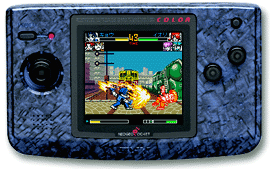
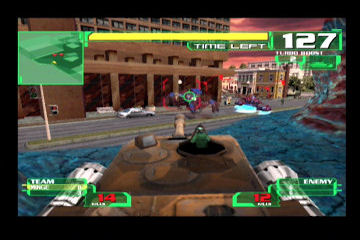
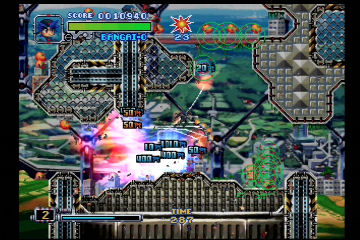
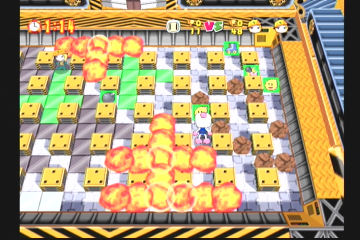
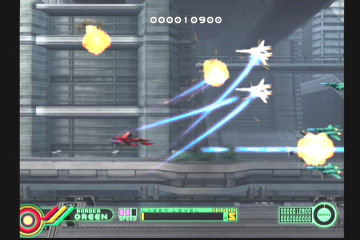
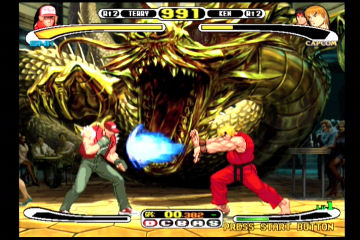
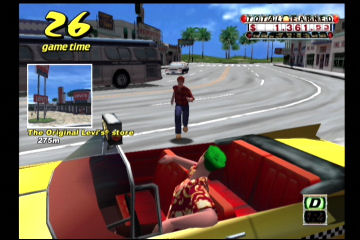
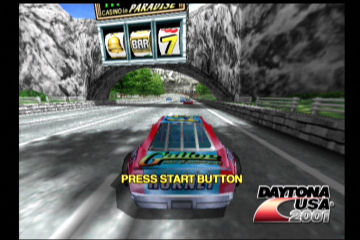
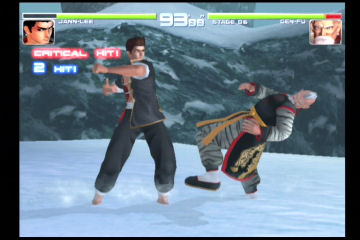


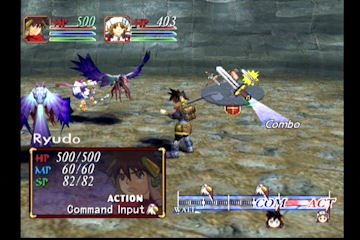
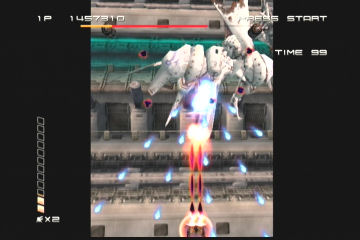
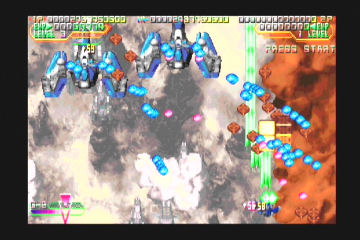
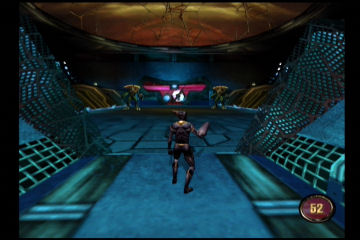
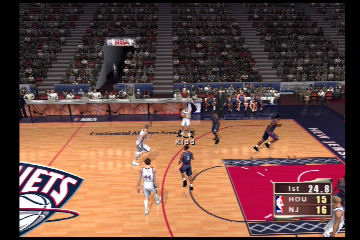

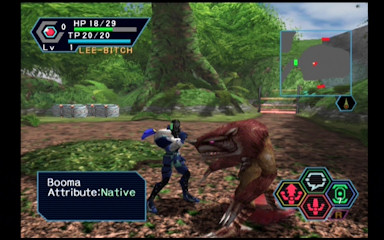
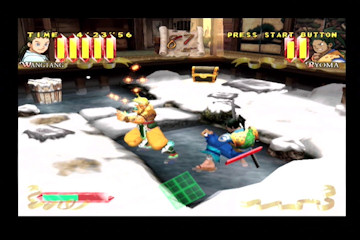
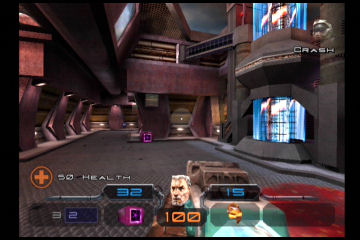
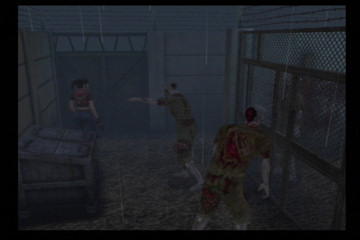
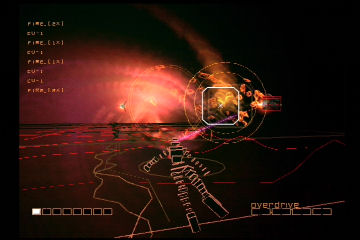
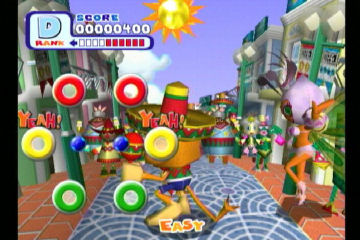
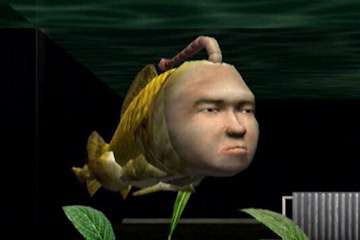
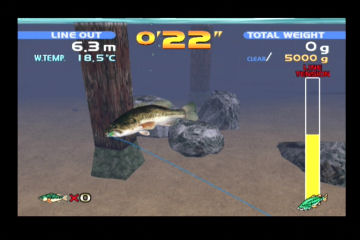
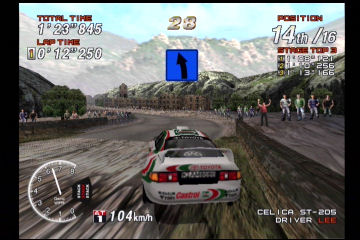
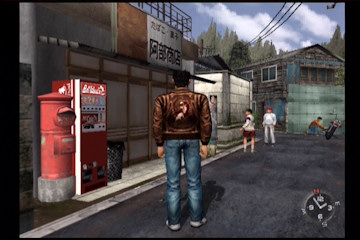
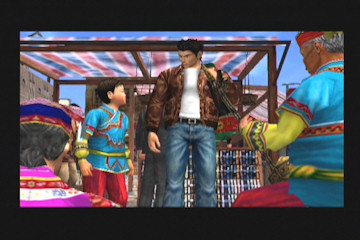
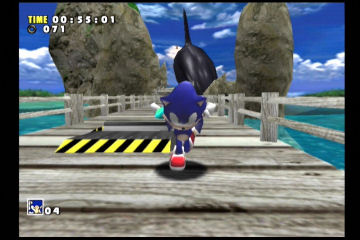
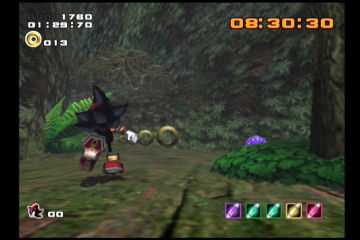
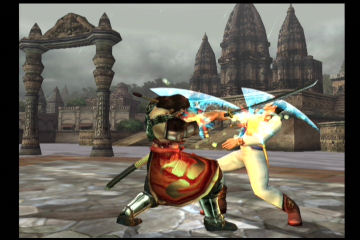
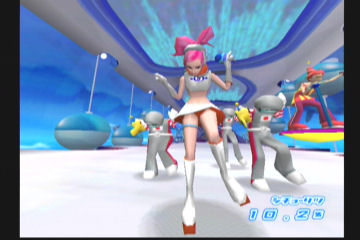
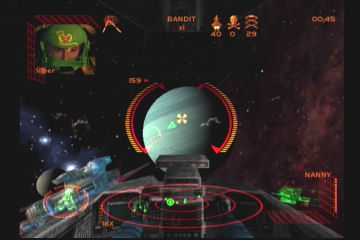
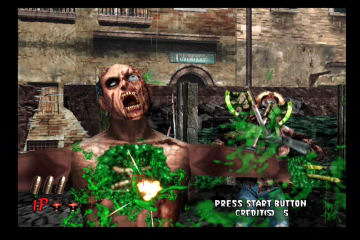
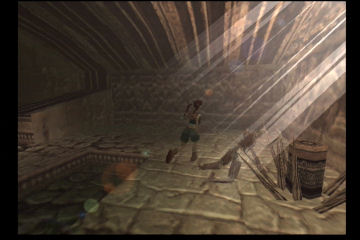
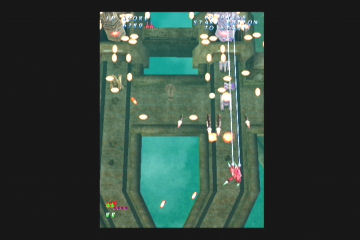
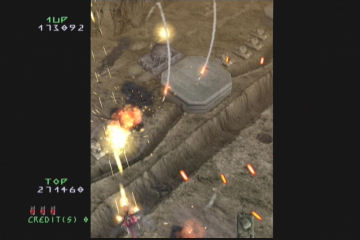
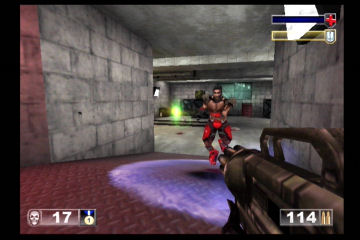
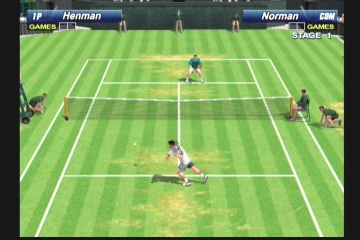
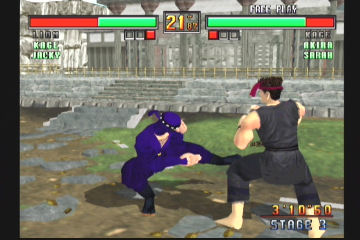
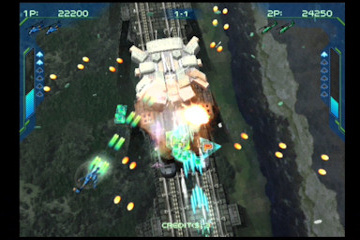
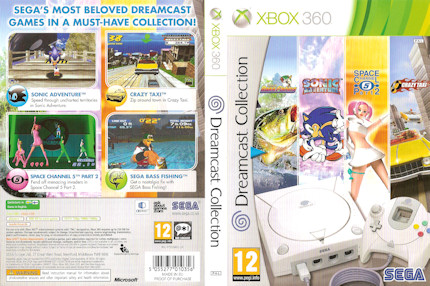


Spped Boost
There is a mod that allows the overclocking of a Dreamcast to 240Mhz! Can provide an extra kick when using emulators.